|
I have something of a tradition in that the end of every year I go through my sketch books and sketches and reminisce about what I have been up to. I put them together in a sort of photo blog. Part one. Pastels
Speaking of which now pencil. Pencil and paper is I find the most accessible and least messy medium. Occasionally I will use pen or charcoal pencil instead but pencil is preferred and I will draw all kinds of things. One thing I am not very good at is drawing from imagination or memory. I find I need to have an image or object to work from to produce anything good. The only way I can do this is to produce abstract patterns. I also tried imagining some monsters with partial success. Nudes! I go to a lifedrawing class occasionally. Sometimes the results are good. Finally Colour. I have a set of colour Ko-ihnor pencils and they are super fun to play with, as are some small Comte pastels.
0 Comments
It probably ties in nicely with the Christmas period to have a Renaissance themed show , which is what the National Gallery have done with Mantegna and Bellini. It is always tricky to review art when the subject matter does nothing for you. I find a great deal of Renaissance painting with the bland depictions from the life of Christ both intellectually and artistically dull. I can appreciated the skill involved and even the ground breaking nature of it all but most of the time it leaves me cold. Thus did much of this show. If this is your thing then you will like it. What the curators have done for obvious reasons is place the two painters attempts at the same subject matter next to each other. There is often little to choose between them and, well its boring. There were some things I like. I like Bellini's In the Garden (above), mainly because of the weird cup bearing apparition in the sky. What I don't like about these is the Mary figures, in fact most of the Biblical figures are really bland. They lack personality, they are just a seraphic blankness. No doubt it is supposed to be an air of holy contemplation but I just read it as absence. My two favourite pieces in the whole show where the two above right, found in the third room bookending a long slim piece of similar style they are painting in this redish brown and white. Of the two I prefer the one on the right, particularly the way the tree raises past the women against that marble sky. There is a personality about these figures. They are unusual and interesting pieces and I forget who they are by. So much for the paying show. If in fact you are minded to go to the National Gallery then there are two free exhibitions that I suggest you go and see. One is the portraits of Lorenzo Lotto. Who? Italian man, Renaissance era, turns out quite a good painter. Very good at beards (see above). Also very good at garments, fur and the textures of finery. If you want your dress to really pop in a portrait then Lotto was your man. The tendency towards blankness that is no doubt a feature of much of Renaissance portraiture is there but in his it is infected with degree of personality. Look who smug the geezer in the picture above is, and rightly so it turns out as he has married up into the nobility. Lotto is also good at hands. Tricky things hands. The above picture was one of my favourites in the show but if Renaissance pictures are your thing but you've had enough of biblical scenes then go see this. The thing you really must go and see though is Landseer's Monarch of the Glen (above). The image is a famous and familiar one and it is currently here on loan from the Scottish National Gallery in Edinburgh, and it is fantastic. I mean really good. Landseer was a bit of a master at the old animals and this one packs quite a punch. For a start it is big, probably about 3 foot square, and the fact that it is square, makes it unusual. Then you have these misty mountains, and wind swept grass and brush and standing atop it all, slightly left of centre, the Monarch is good. The fur texture is superb. It feels alive. I really liked it, can you tell. They have put it up with a number of other of Landseer's painting, including this one above, which is smaller and thinner but I found really moving. Queen Victoria brought it for Prince Albert as a present which shows good taste and the Queen had lent it for the show. Again you have a magnificent stag in this very misty , early morning setting. What you cannot see very well from this photo is that brilliant rendered are water droplets coalescing and dripping off the body of the stag. It looks wet. Its a very nice painting and I'm glad I've seen it. Did you know that Landseer designed the Lion's Trafalgar Square? It is one of those facts that drop out of my head frequently and this show reminded me of that. One of the pieces on display was a study of a Lion (above left), with the characteristic Landseer textured fur with this accurate musculature underneath.
Landseer couldn't sculpt though so he commissioned one of his mates and there is a fine picture of him at work in this cavernous studio. What you can't see from the photo there is a collie curled up at his feet. It is a good little show this and I am glad I've see in. Speaking of good little shows I have a painting (below) in the Indo Christmas show which is on until January 2019. Until then have a good Christmas. Unlike the excellent British Museum exhibition I went to and wrote about recently, the British library is stingy as hell at giving you access to images of the exhibits on displays. You are not allowed to photograph, which I understand given the light sensitive nature of much on display, but there are also few scant pictures on their website. it can't be copy right reasons. So instead I have plundered the postcards they sell. Unlikely to be a breach of copyright give a) the subject matter and b) this is a review so fair use. Seriously though, why no images? It's a good show, if you like illuminated books, which fortunately I do, there is allot of things like the above. This also means there is allot of bending to peer at cabinets. One of the things these shows always bring home to me is the sense of their being nothing new in this world. In a slightly silly vein this slightly puzzled St Luke (or possibly Mark above left) looks very much like a South park character, but it is the folded design of this cloak the interested me. It is quite abstract in a way, you can imagine it in a Picasso painting. That and the designs you see around the side of the illustration and indeed as entire motives themselves look very familiar. The knots for example (above right), seem very celtic and is a motif that has a revival of late and something I see allot of on the arms of hipsters as they serve me single origin coffee. That design is one my favourites. I imagine in its pomp the reds yellow and greens where allot more vivid, having faded over time, but I like the alternation of the circular knotted roundels with those zig zag squares. It is incidentally a page from the Book of Durrow, and the original is much better. Go and see it before it returns to Dublin. These themes of interweaving different strands of colour occur again and again in this show as in what is possibly a contender for the worlds most ornate Q (above left) from which is in fact, as those ecclesiastical latin readers amongst you will all ready know, the opening of Psalm 51 from the Bosworth Psalter. Much more ornate and flecked with gold is the appropriately named Carpet page from the Lindesfarne Gospels (above right). I don't know about you but I always get a smug, very radio 4 thrill, seeing things like this that I have actually heard of in the flesh, and marveling at their preservation for over 1300 years. Pitches you right back there. Strange an mythic creatures pop up a few times, like this grump looking headless creature, upset presumably at the absence of genitals (above left). It is a Blemmya and is apparently 8 feet tall and 8 feet wide from an 11th Century book called the Marvels of the east. I particularly like the way his (and it is apparently a he) is gripping the frame of the picture, with his feet over the edge of it, as though he is about to step out. It is the kind of things art students do and think they are doing something terribly clever and innovative about the breaching of the frame, when in fact it would appear the idea is at least 1000 years old. There are more than a few illustrations of men (and the illustrations of people are almost all men, kings scribes, apostles, the only woman I can recall getting a look in was Mary) scribbling away. The one above right particularly caught my eye for two reasons. Firstly it might be an illustration of the Venerable Bede (my favourite Bede) from whose quill much of this era seems to have flown. The other is the colour and composition of the piece. Those red angled buildings and the red arch, form a very effective contrast to that lovely dark blue background. You see? Religious scenes covered in gold (above left) and monsters (above right). This leads me to one of the slight draw backs of this show. It is almost all books. And you have to lean over, as though bowing to a minor royal, in order to look at them. The illustrations are wonderful but many of them are ancient text. If like me you cannot read latin or greek (the Lertices which the creature is, again from Marvels of the East is described in Latin), you are a little non-plussed. Although it has to be said the penmanship is exquisite. On a side note I was hoping from some interesting or rude marginalia but was left disappointed. On the issue of text there are some truly epic examples. From an illustrative and artistic standpoint you get what I imagine most people think of (I certainly do) when they think of medieval books which is stunning calligraphy covered in designs and gold. The Beginning of the Gospel of St Matthew from the appropriately named Harley Golden Gospels (above left) is just a stunning thing. The gold still shines after all these year, and you could look at it for ages, or until you back aches. Then from a literary point of view you get interesting things like the first gospel in English, or one of the first written versions of Beowulf (which inspired me to buy the Shamus Heaney version on the way out). The example above right are the laws of King Cnut. Beautifully written and apparently in English but in an English one would struggle to recognise or even read. If you read it out it makes more sense but much of it baffles. What is a flyman? Anyone? The last thing I shall talk about is cartography. There is obviously much more in this really quite large show than I have covered here. Go and have a look it is very interesting from several angles. If you are interested in Arthurian legend then there is for example and early version of Sir Gawain and the Green knight on display.
If like me you are drawn to maps then you won't be disappointed as there are several on display. Incidentally I will pause here to note that like all people for pretty much all of recorded history the Anglo-Saxons knew the world was round. Anyway, back to maps, they are lovely. So you get the Celestial like the above left which is a diagram of the planents from Isidore "On the Nature of Things". A beautiful document which places earth at the centre and Sol beyond Venus (called Lucifer here, the morning star you see). Then you get the more explicitly cartographic with this world map from the 11th Century (above right). It is orientated East, West, presumably so Jerusalem is at the centre. The rivers are in red and the long one is the nile. What did they think happened if you sailed west? I imagine they thought you drowned, and they were probably right. It's a good show, go and have a look but mobilise your back before you do. If anything it is a bit too big and I found myself towards the end thinking, not another book and marching past a copy of original Domesday book before realising what I had done and scuttling pack to peer at the indecipherable entries. Anyway I a final word on me! I have two shows going on at the moment. One at Beans Love Greens which ends on 18th December (so may well have ended by the time you read this) and I am in a group show at the Indo bar which is on until 2nd January. Go to them, eat drink, get carried away and buy my art. I have an embarrassment of riches in terms of shows on at the moment. I have Rocks and Flowers on at Beans Love Greens until 16th December, I have a picture in the Indo Christmas show on until 2nd January 2019, and I have five works in the Candid Galleries Christmas Fair. This ends at 6pm on 9th December so chances are it has already finished. If however you are reading this on the 9th, then hurry down there (details above) and you can see and maybe even buy one of my paintings. I have done solo shows before, I have done group shows before, but this is what you might call my first seriously commercial show. Here there is a genuinely expectation of selling. The process is a little unnerving, or at least I found it so. I handed over my five paintings on Tuesday morning and then left. So the first time you see how they look is when it is open to the general public. I was gripped on the way there with a terrible anxiety that there would be some terrible mistake, my work would not be on display and I would look a prat. Of course it was there and above you can see me in front of my five pieces, with my wife who has a very unlikely job coaching here! I had submitted 5 pieces, all of parts of the Regents Canal, a common obsession of mine. The one above left is of this strange lonely chimney that sits on the East bank of the Limehouse cut. It is therefore called The Chimney on the LImehouse Cut. Above right is this curved block of flats which had caught the light in a way that interested me. It is just called the Limehouse Cut. The other three are pictured above and working from top to bottom are Warehouse on the Regents Canal, Gasholder on the Regents Canal and Bridge over the Limehouse Cut. The first two of these have in fact been exhibited before at a show I put on at the Hoxton Cabin. The last one is the most recent production. When they were all at home I thought Gasholder on the Regents Canal was the best, but as often happens put up in a different environment with different lighting they look very, well different. I know thing Bridge over the Limehouse Cut is the best one. It is more convincing. And here they are all together, in amongst paintings by other people. I don't mind them being separated too much. What I thought was a bit odd was the two portrait orientated paintings being split up by a long thing painting by someone else, but also of the Regents Canal, or at least a very similar scene. Additionally this painting (which is pretty good by the way) had no label which led to some minor confusion with some people thinking it was by me. A word then about the fair itself. It is over two floors. The ground floor has a number of stands selling jewelry, bags, ceramics, art and similar things. If you then ascend the frankly rickety stair case you get to the large first floor gallery where most of the art (including me is) see above. It is a good space, long and wide and if you were there during the day, large windows to fill it with light. I got there as the private view opened, at 17:00 and there were few people present but it slowly filled up. The anxiety I felt gave way to relief, which gave way to confusion as to what exactly I should do. Some of my competitors were hovering around near their art with labels identifying them attached to their person. I opted instead for flitting around in a haphazard way, a time during which I firmly formed the view that I would not want to be manning a stall at such an event. Eventually I calmed down enough to enjoy watching people looking at my art (which is a nice sensation particularly if they stop for a long time in front of it) and also looking at my competitors. Some of them are good. This large disturbing triptych (above) by Ioana Alexandra Baltan is a powerful piece of work. These pale desperate Goyaish figure stumbling against a distressed looking background is effecting. They are large pieces and at over a grand each I do wonder if they will sell. Even if they don't they are very good. I suspect much more saleable, and indeed they appealed to me more, is the work of Yuet Yuen Teo who had at least 5 works on display that I saw including 4 of these Chinese style ink paintings. The above two where my favourites. They are simple and elegant and show a high degree of skill. Also at £450 each they are relatively affordable. I suspect she will see some. That reminds me I had carefully planned my strategy for this show. I had been round it in previous years and last time almost everything was over £1000. I had therefore cunningly chosen my price point, of £400 each as coming in below this. This year though the price point was lower and although my work was among the cheaper many other people where priced similarly.
After a while people started arriving and people I knew turned up (not him I don't know him), including people from work. You show them your work and then, well then you babble like a fool. I need to work out some patter. After a couple of hours and with a couple of hours to go, I started to get hungry and decide to flee for some food. I did not return for two days, indeed I have not yet gone back, I go back this afternoon. I wonder if I will have sold anything. I do hope so.
The first challenge with this exhibition is how to buy the ticket. As I strolled up to the ticket desk I wondered to myself how many people had tried to pronounce Ashurbanipal. I bottled it an instead asked for the Assyrian exhibition. That seemed to do the job, then into the show. You are immediately greeted by these large stone carved slabs, that are the major part of the show (as above).
Works like this really transport me there, softly lit in a darkened black room, allows your imagination to work to full power. Artistically this is quite interesting. I like the thick square beards and the over defined musculature. There is a element that seems to reoccur throughout this show which is whoever the carvers are show almost the skeleton under the muscle particularly in the legs.
Ornate pedestals to columns are a big Assyrian things and thus you get people like this noble gentleman who the curators have very smartly elevated so it peers down on all us stumbling mortals (above left). You can imagine a great sweeping column emerging from his head. I do like those beards the do make for an excellent sculpture subject. Mythical animals who have often a protective of deific meaning are another column base staple. Half person half animal is a common theme. My favourite of these is this cheeky little chappy above right. I like the paw like feet and those strange vacant eyes. I imagine those original had some kind of twinkling gem set into it. Like all such shows when done well you want to be back there, seeing the palace, sadly burnt but as we shall shortly see, the burning had unexpected benefits. Cuneiform. Pretty much the first writing system in the world, backbone of the Assyrian empire and one of their major contributions to the culture of the world. Several artifacts of this survive. I have already shown you the multi-sided writing columns, but they wrote more commonly on wax and on clay. Wax for notes and learning show in this quite beautiful textured wax tablet, the wax now gone. Next to it these tiny detailed clay letters, packed with information.
In an inspired move the curators presented this bookshelf of written artifacts. This towering rows of soft yellow writing. As a bibliophile I almost salivated at the sight of this. Letters, prayers, orders, curses and all sorts of other things. The writing in clay made these a well preserved form of literature. The Assyrian's air dried their clay tablets. When the Babylonians burnt down Nineveh the caused the clay to be fired, thus making them even more durable. The serendipity of history. One of the recurring issues with displaying historical artifacts, particularly decorations like tablet and statues is that often they were painted and other than faint glimmers, those paints have disappeared. . Of course you can't repaint them. One solution is to do a mock up. The other more brilliant solution that the curators of this show have done is to project what they think the original colours to be onto the work, so you have without (above left) and then with (above right). Thus you can see the original in its current state and near to its original state. It is a very smart idea and hats off to whoever thought of it. I hope to see more of this. Lots of these tablets are story boards, usually of battles. You can just about work out what's going on for yourself, and there is a description to help. But in another stroke of genius elements of what is happening are recounted and the relevant part of this hugely complex and violent battle scene are highlighted. Smart right? I thought so. Again more please. Superb carving this vainglorious celebration of one of Ashurbanipal's victories.
There is much more than this, and I found this an excellent and inspiring show. On the way out there is a little display case (above) which invites you to learn Cuneiform and help in the translating and assembling the giant never-ending puzzle of various shards and pieces. Its tempting isn't it. One can see oneself on a lazy Sunday afternoon, sitting in the garden, translating fragment of Cuneiform and realising that they match a piece translated by another person doing the same in an Argentinian suburb, before of course you are rudely interrupted by Piorot investigating a murder. Thus inspired I was fired into the bookshop and bought many things. This shop caused me to remember that I know someone who does exactly that, Gwendolyn Leick (below) is a member of the Hackney Weightlifting Club, where my wife coaches. But now some about me. I have two shows going on at the moment. I know two. I have one featuring still life called Flowers and Rocks (below left) at Beans Love Greens in Shoreditch. I am also back at the Indo Bar (where I have exhibited before) with one painting in their Christmas show (below right) which is on until the new year. Go see them, buy one, make me rich!
|
Archives
June 2024
Categories |
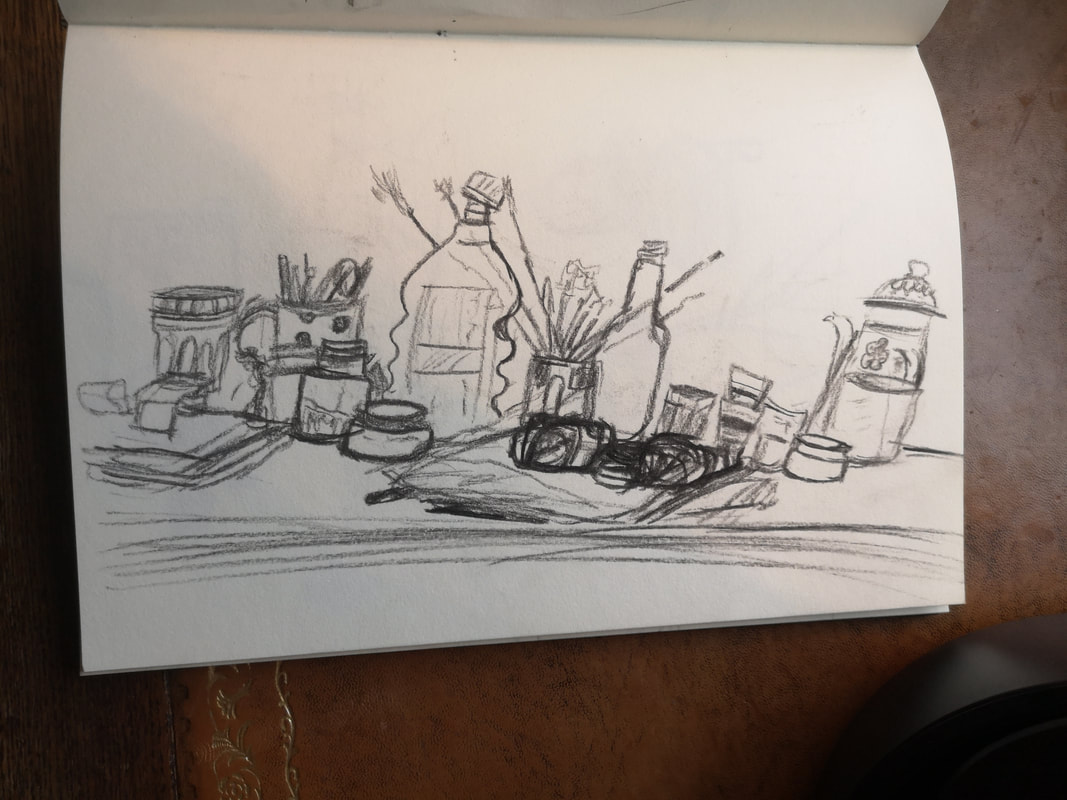

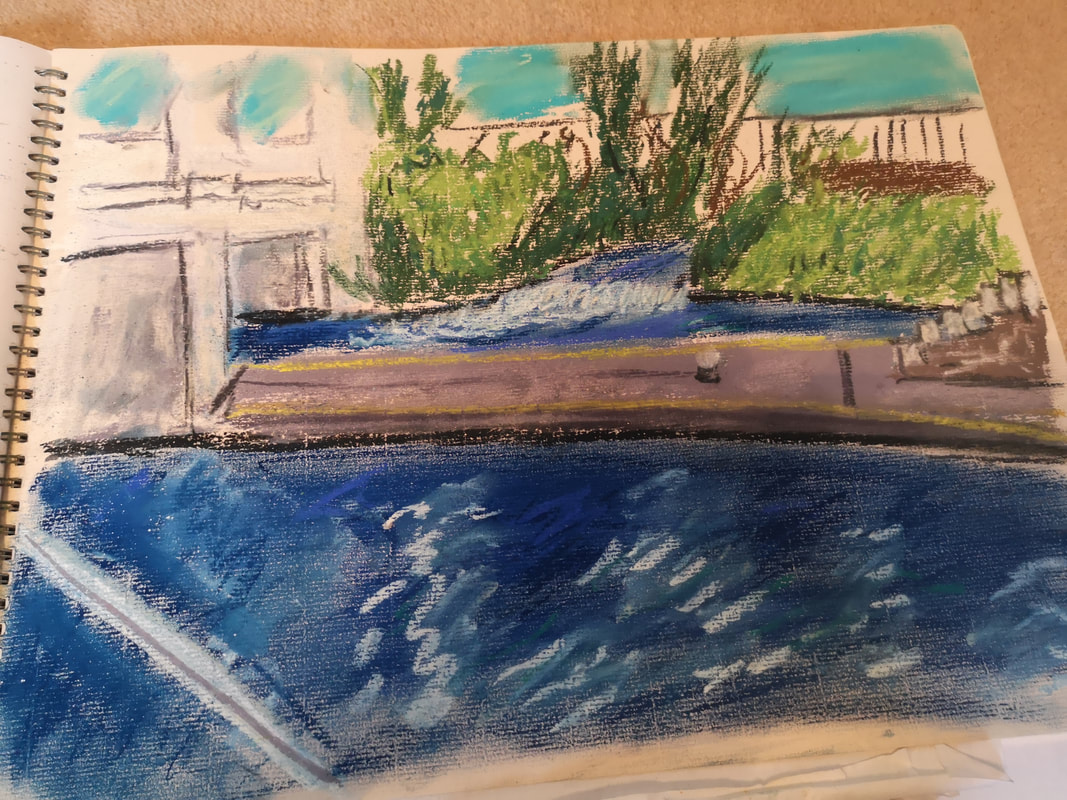
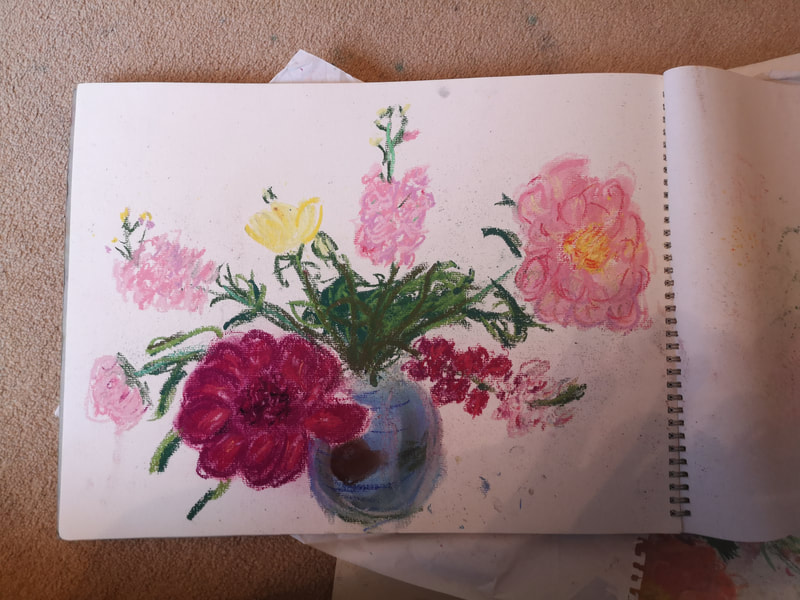
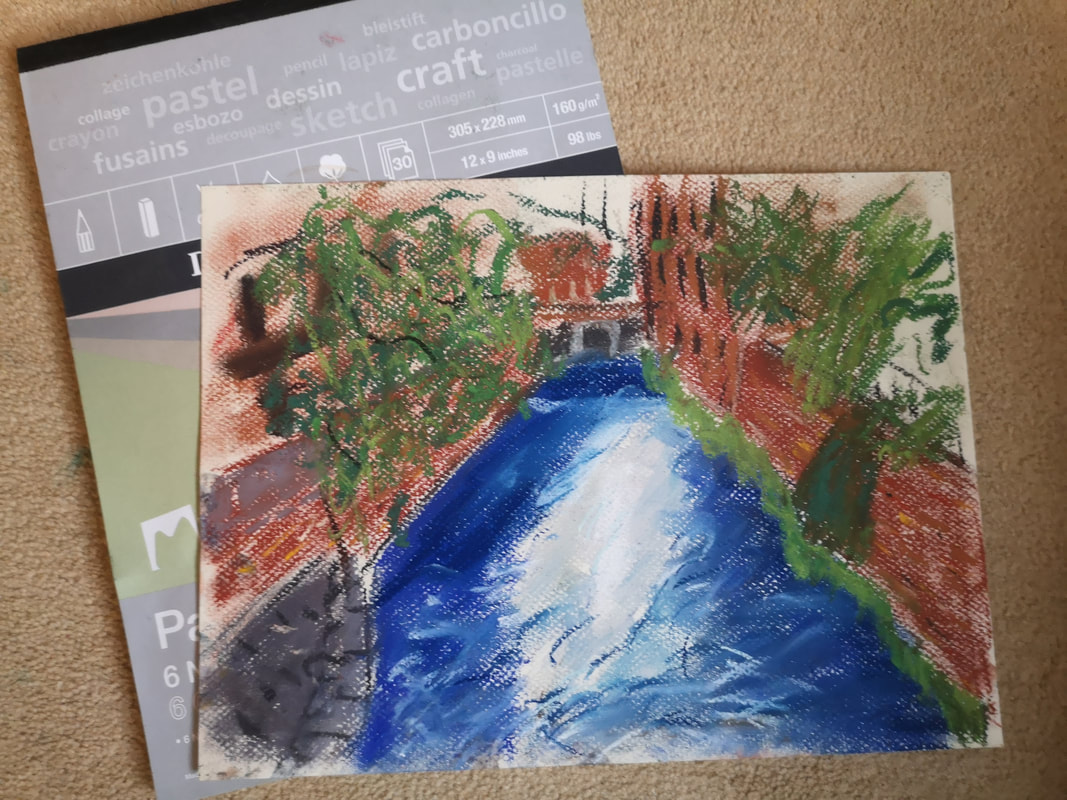

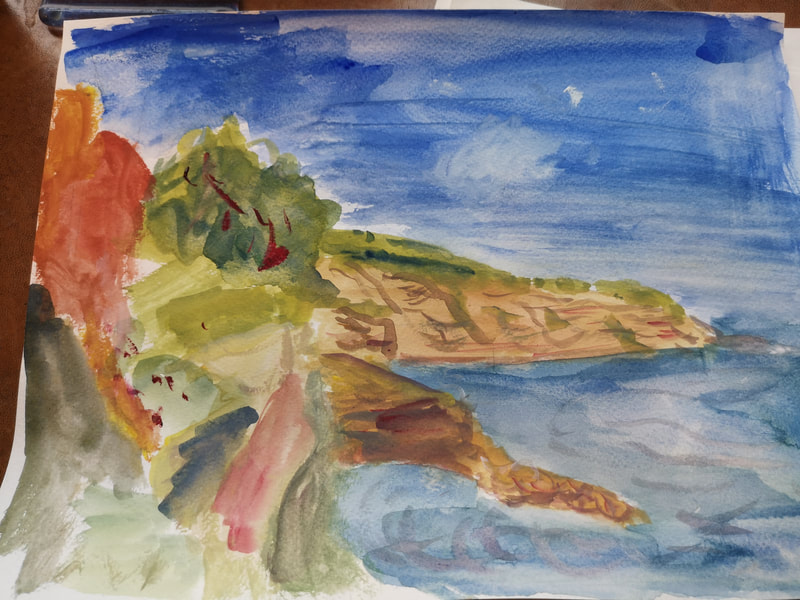
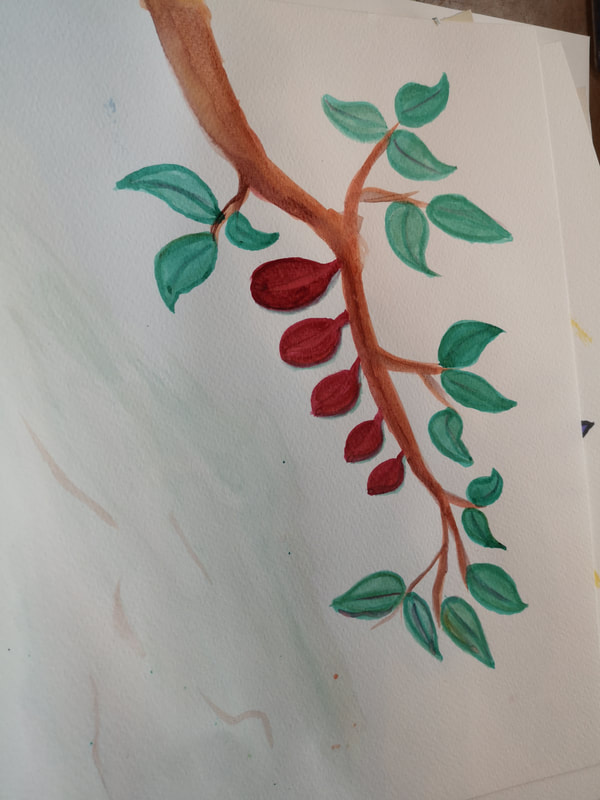
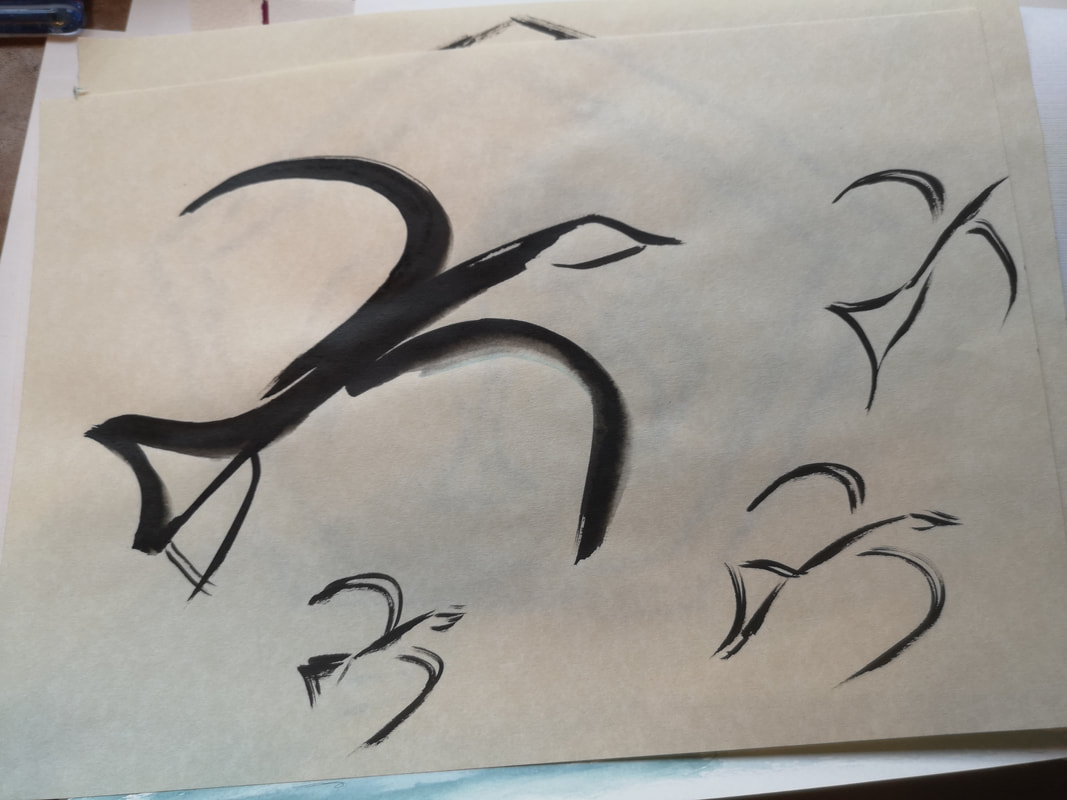
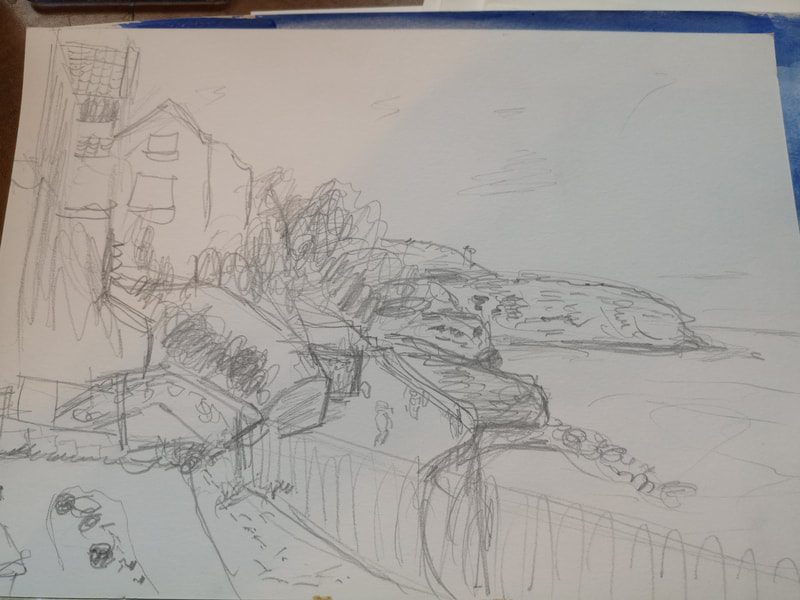
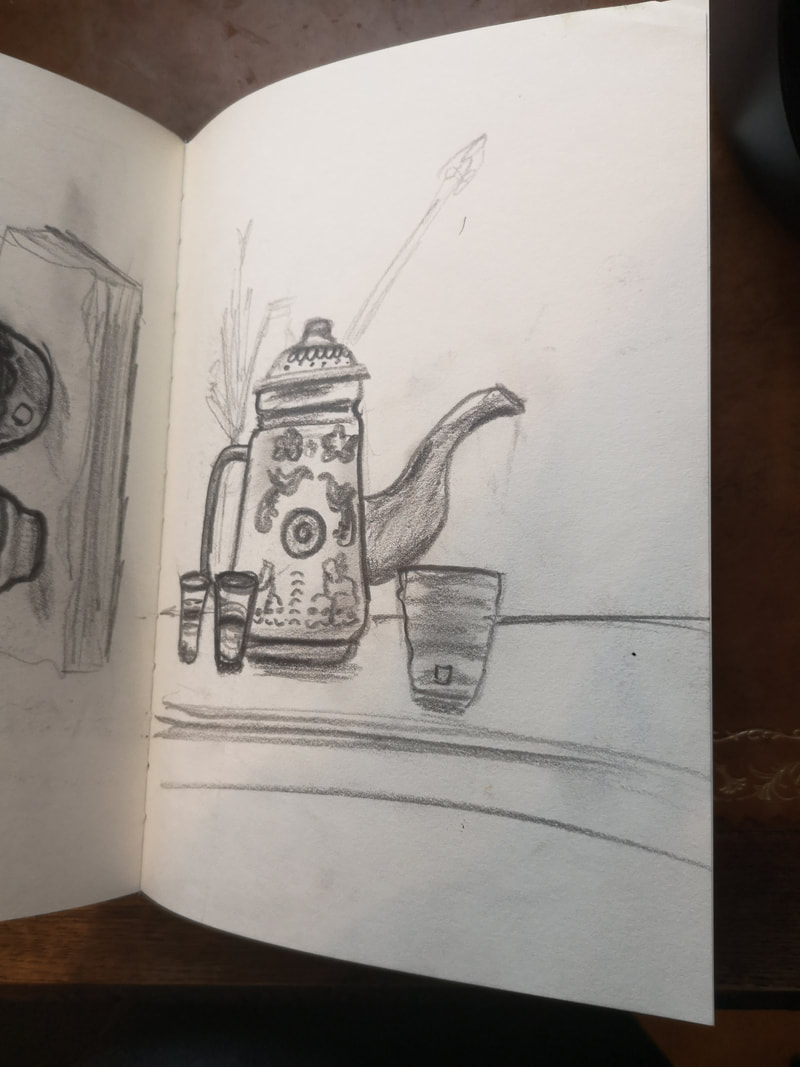


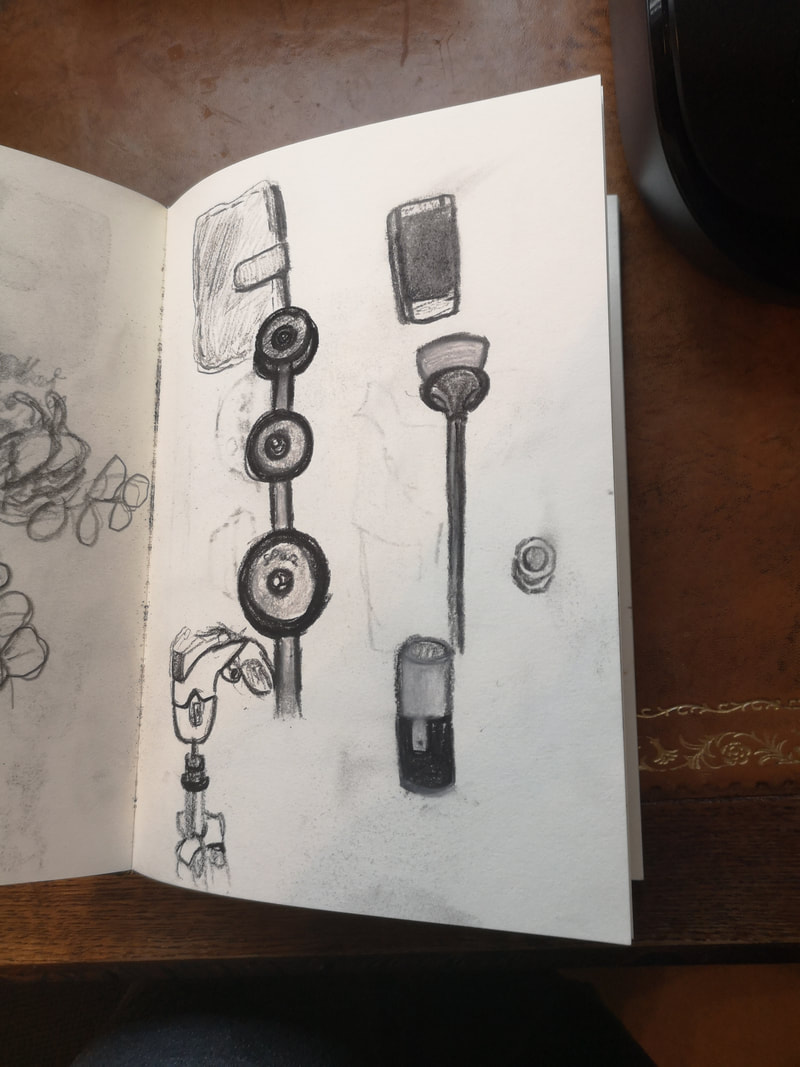
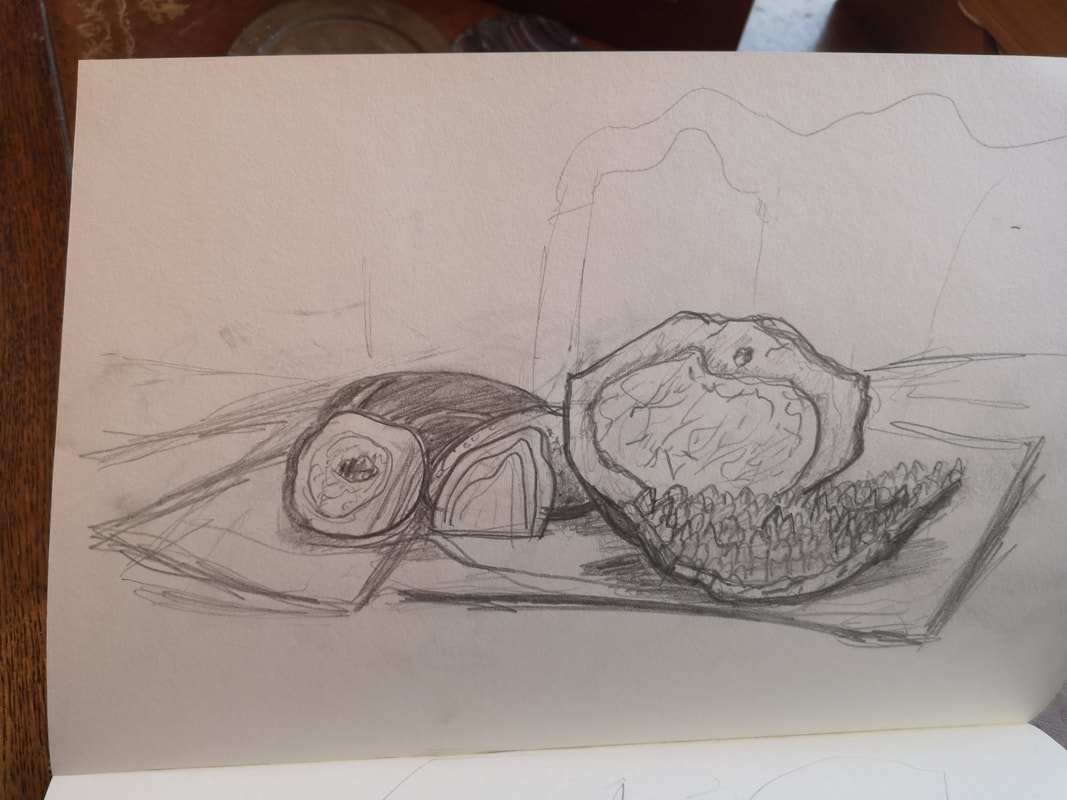

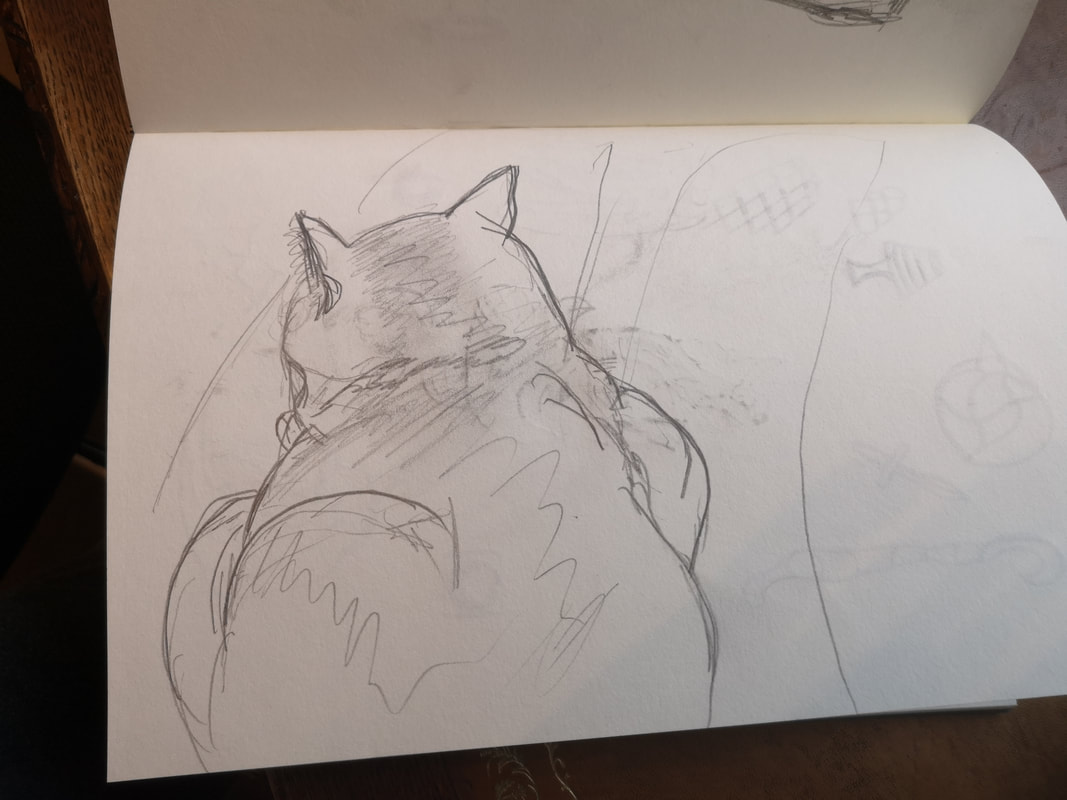
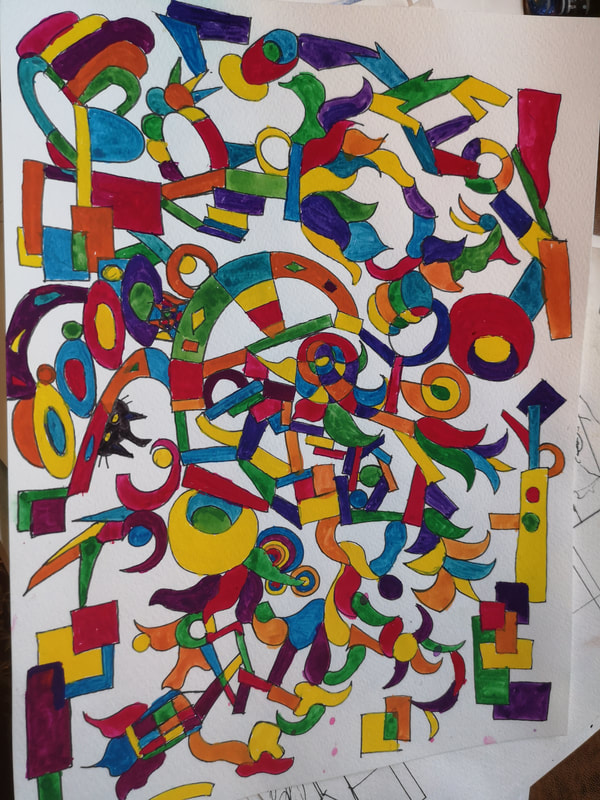
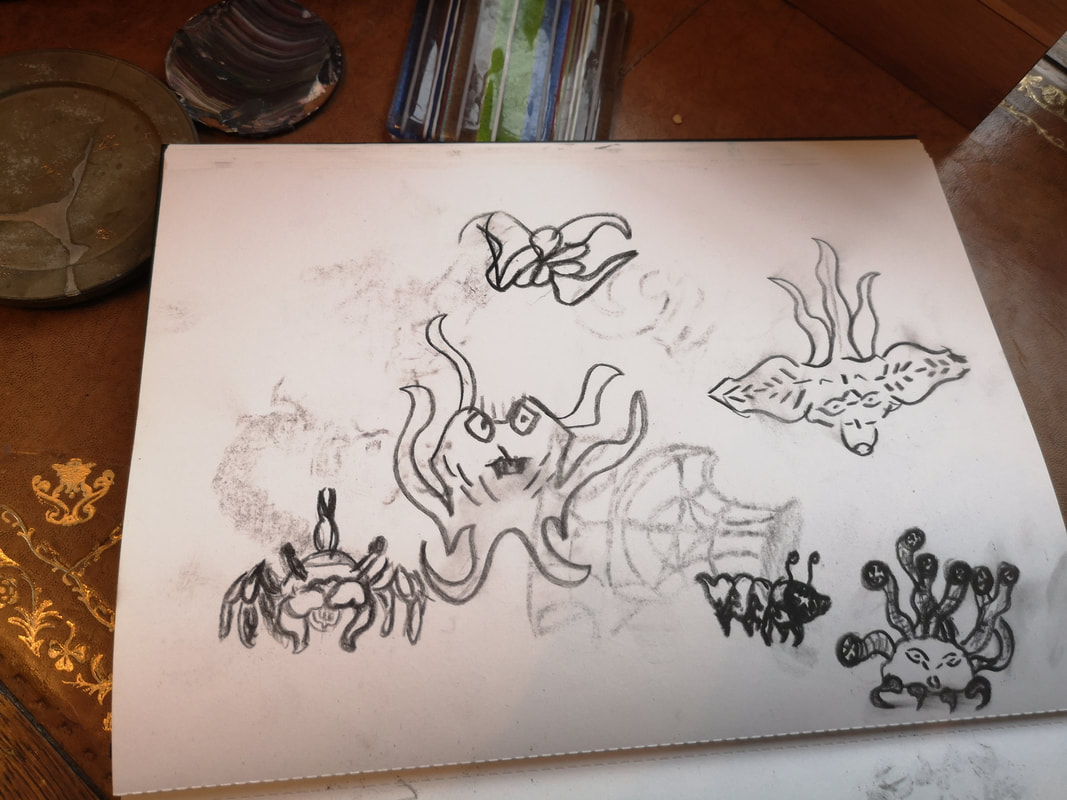
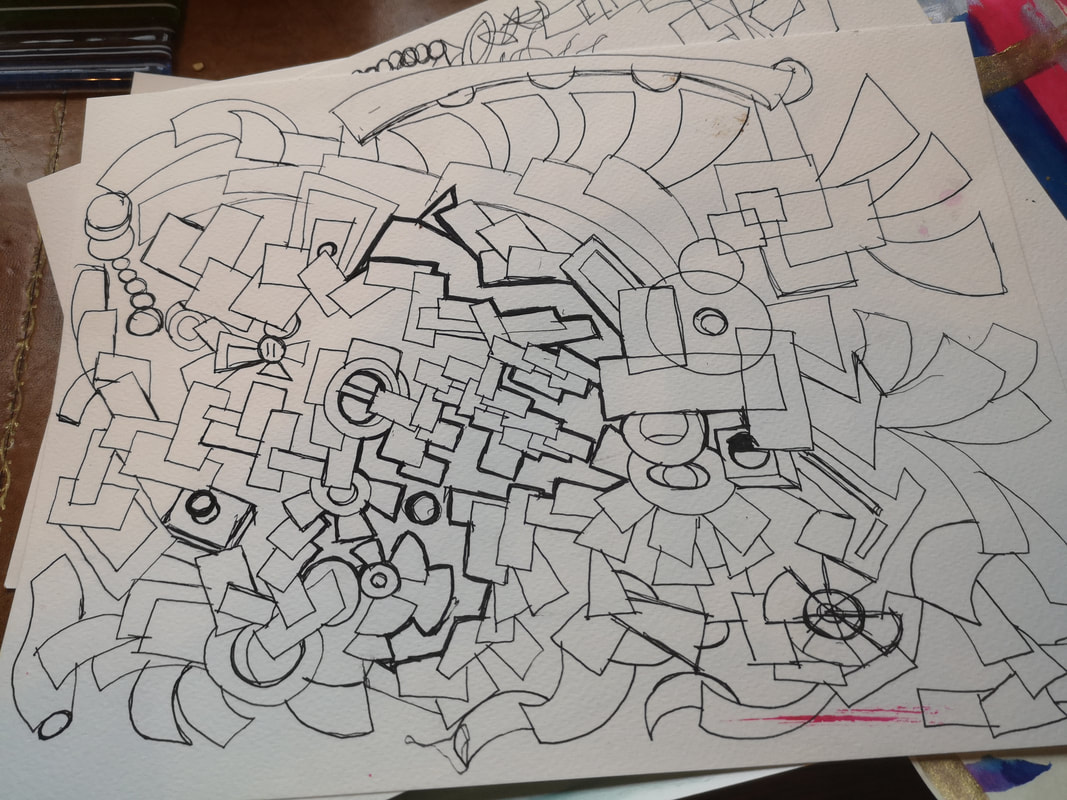

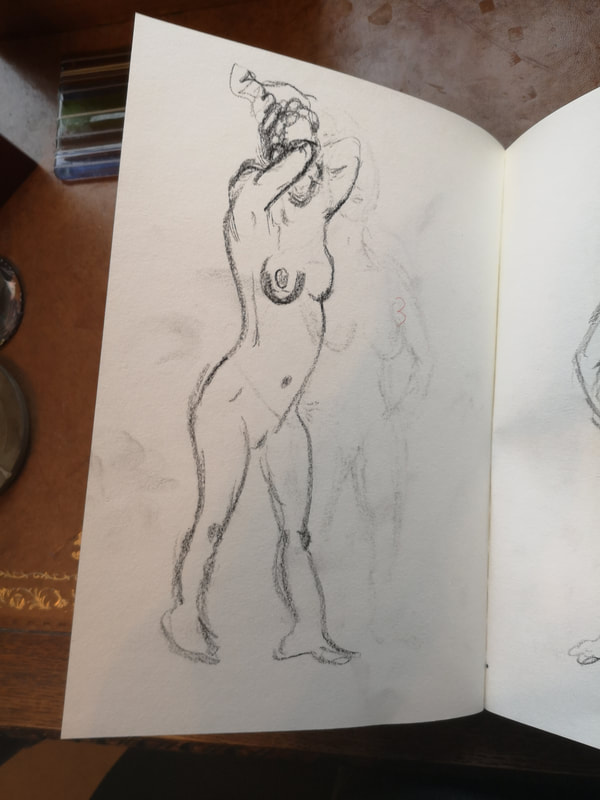


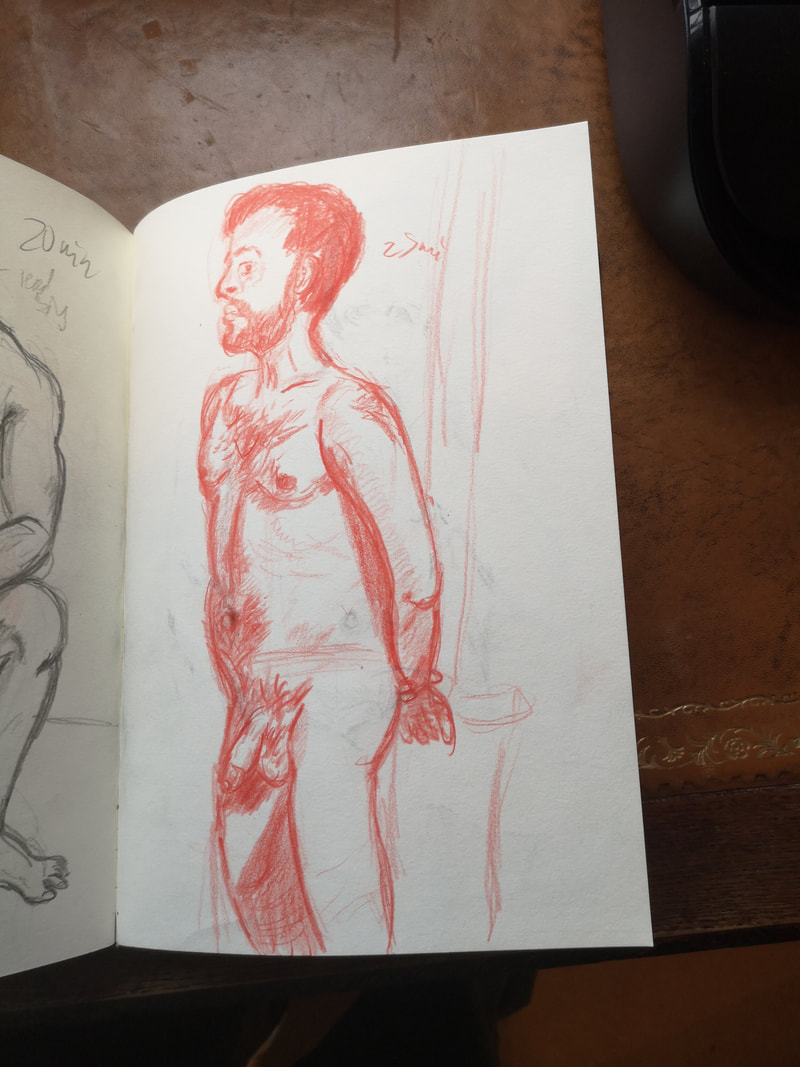
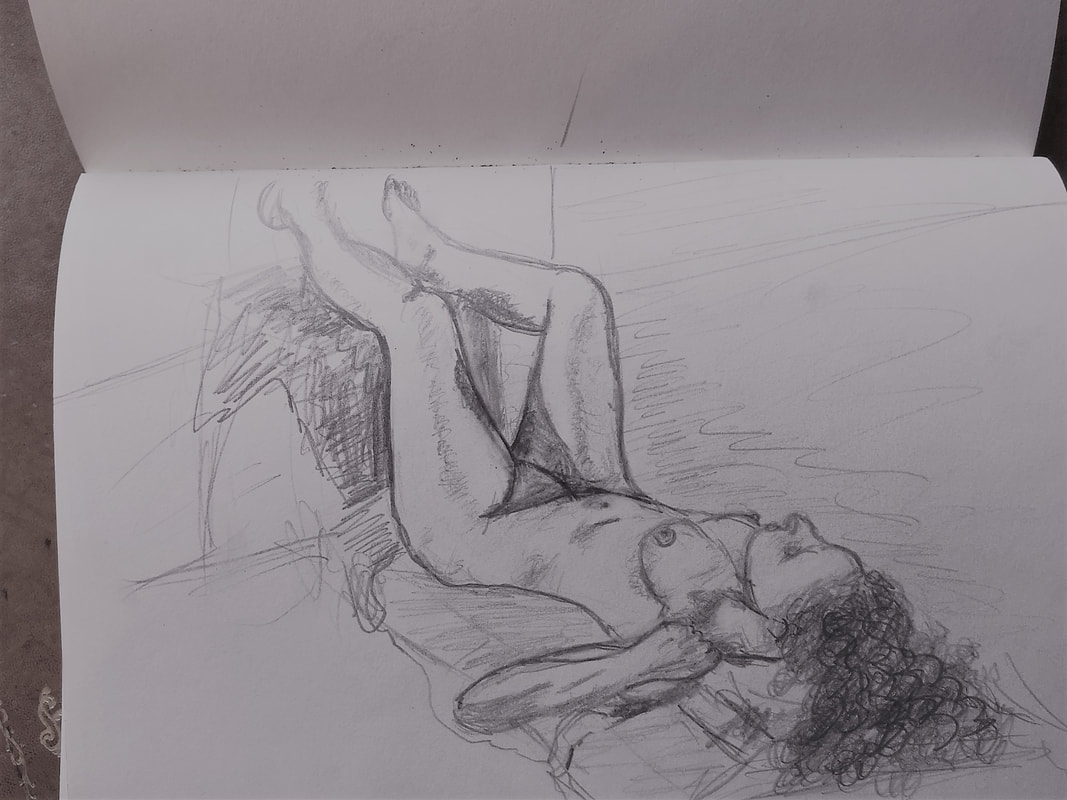

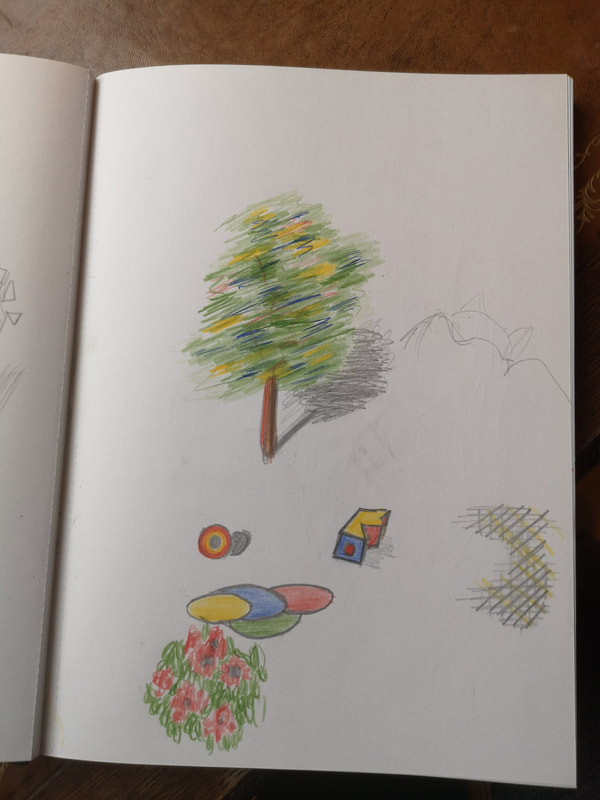
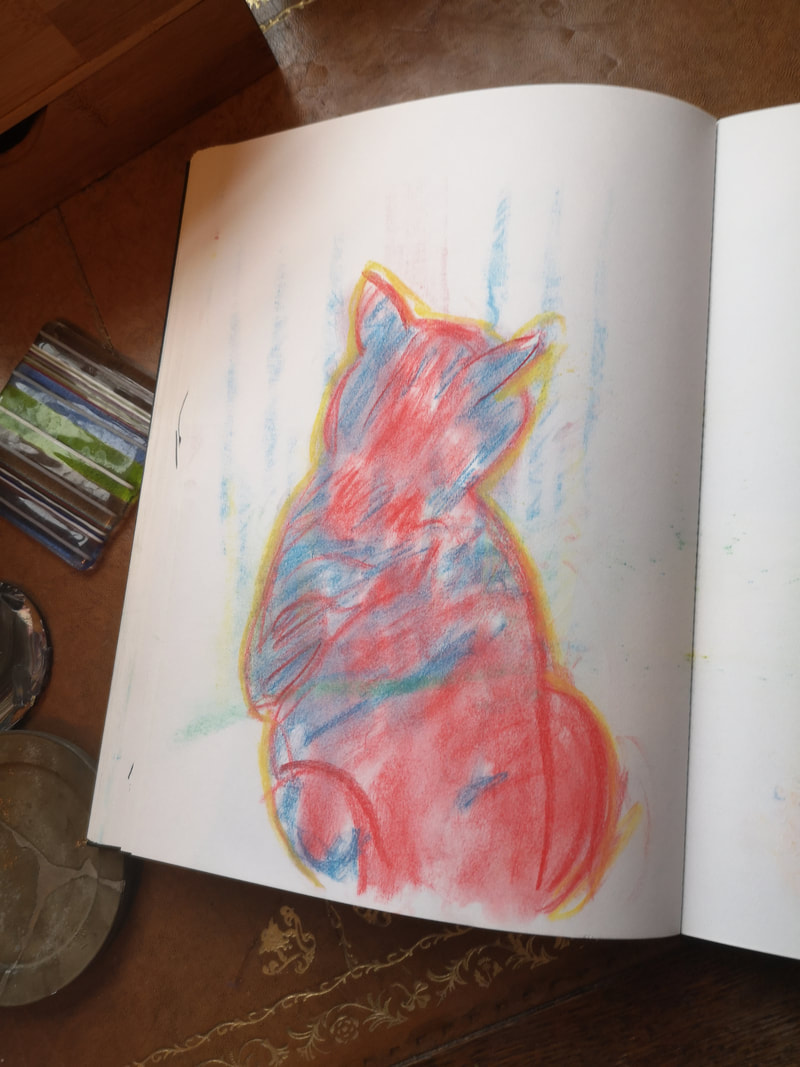
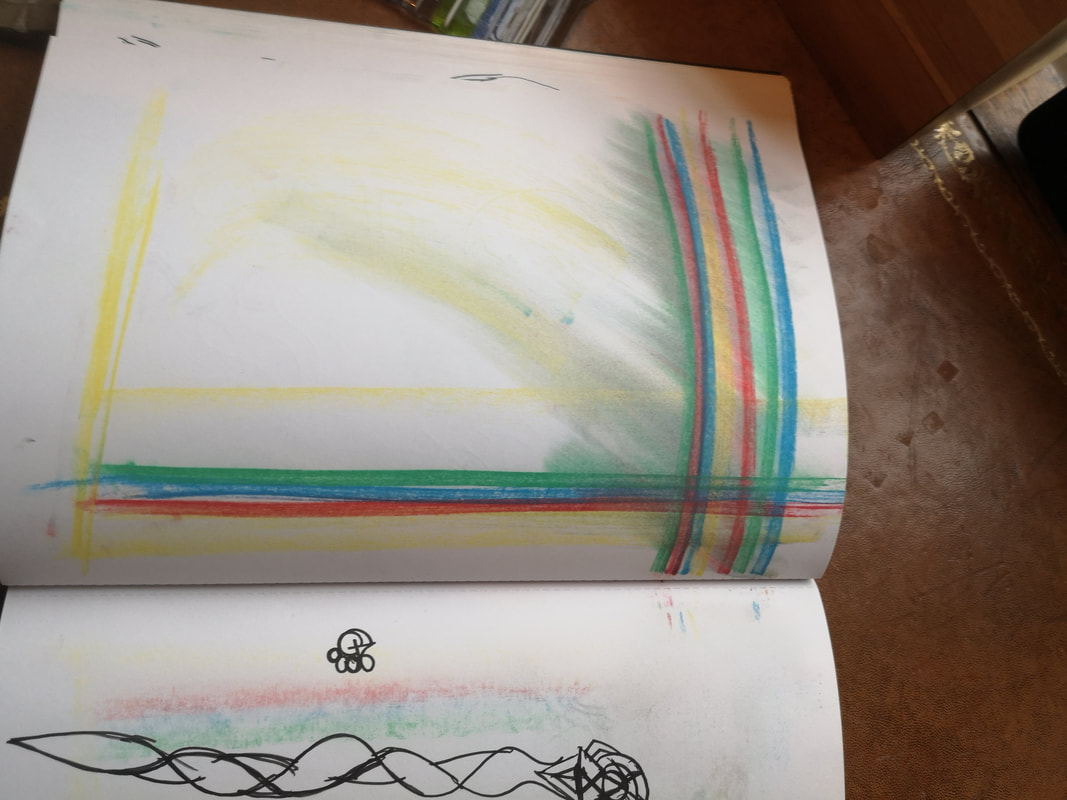
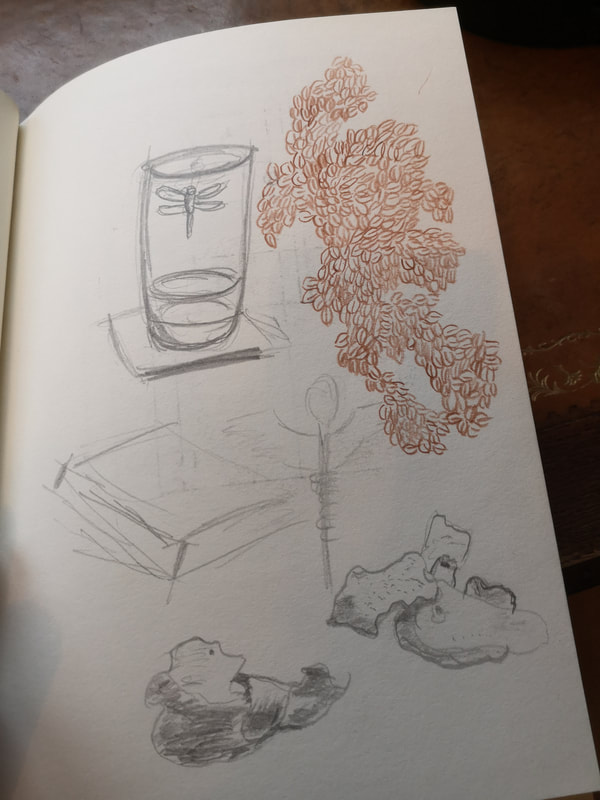
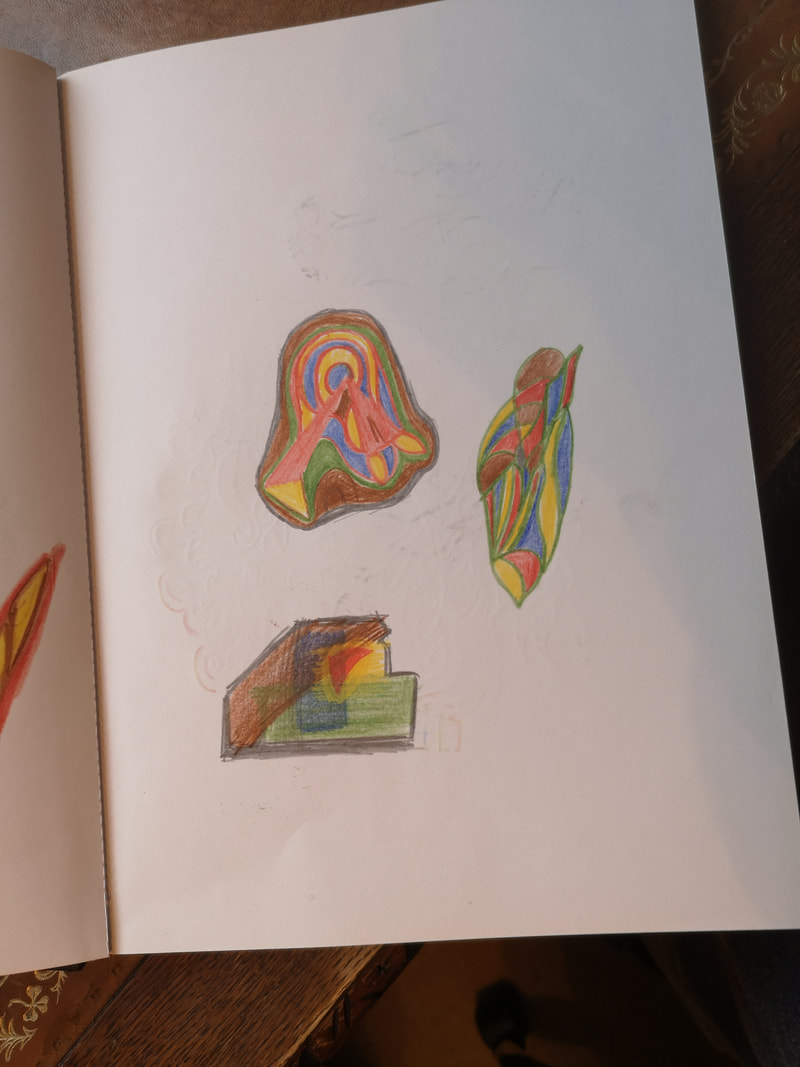


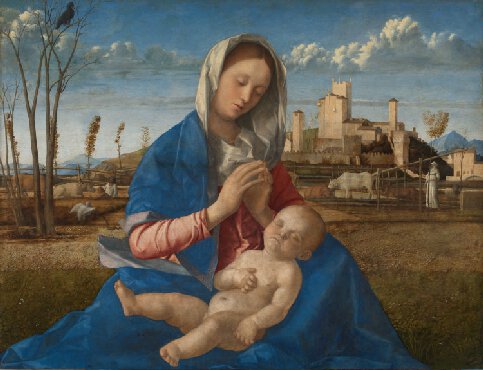



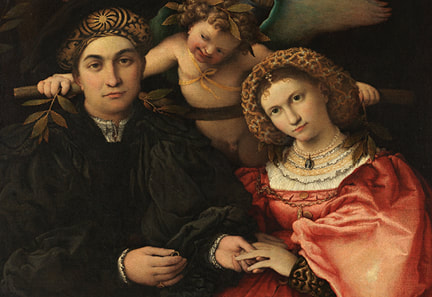





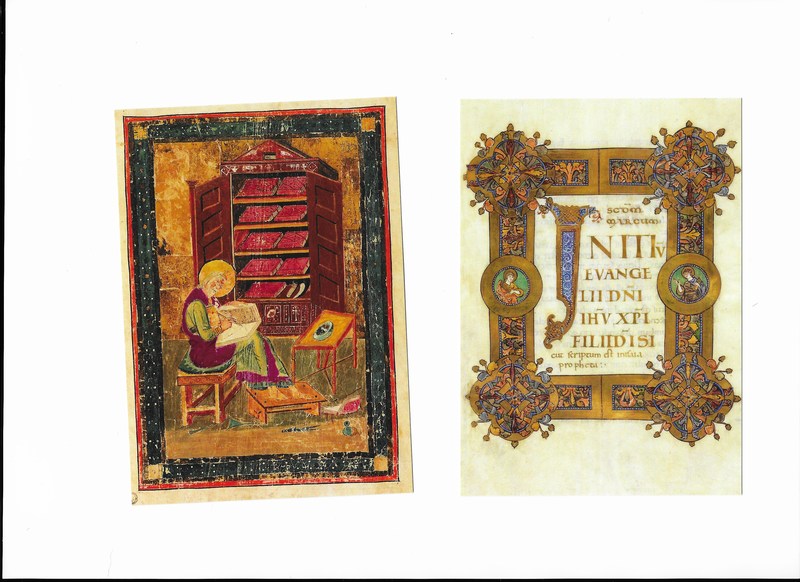
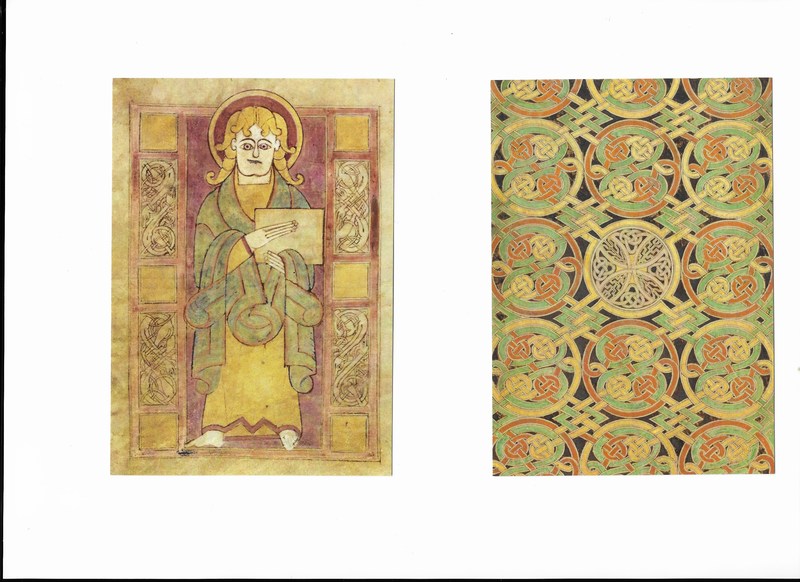
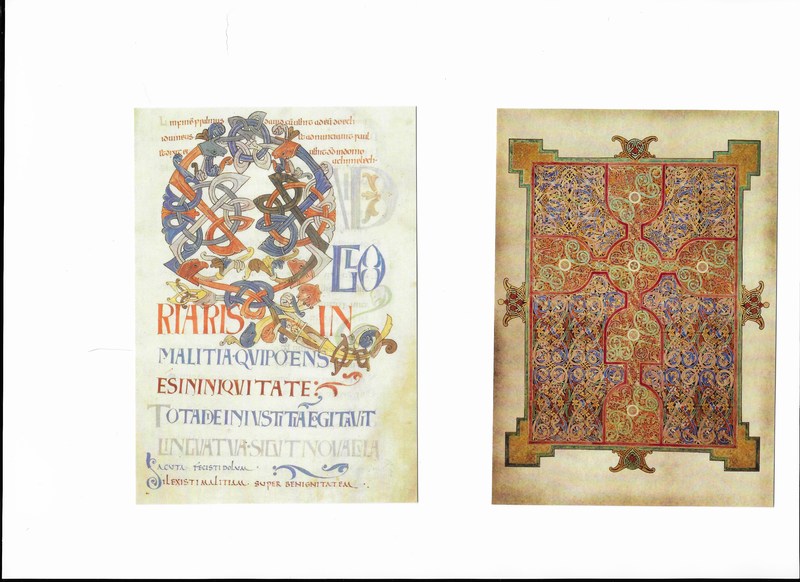


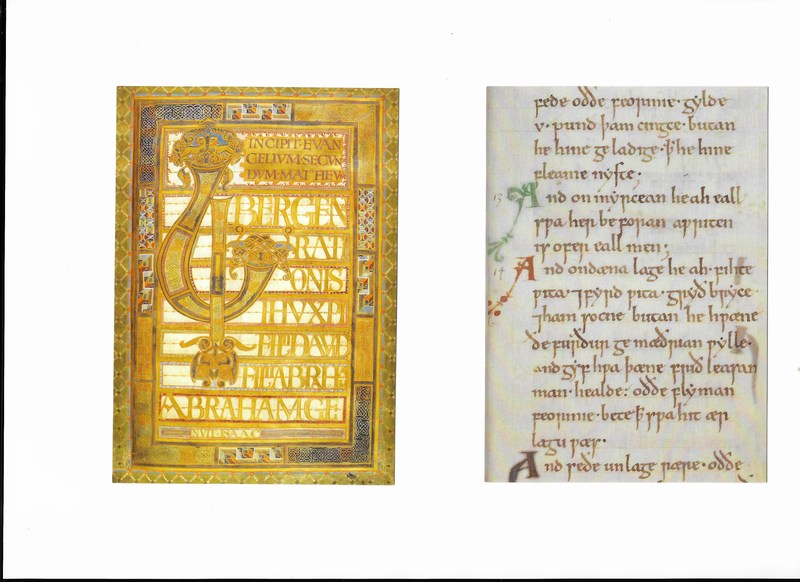


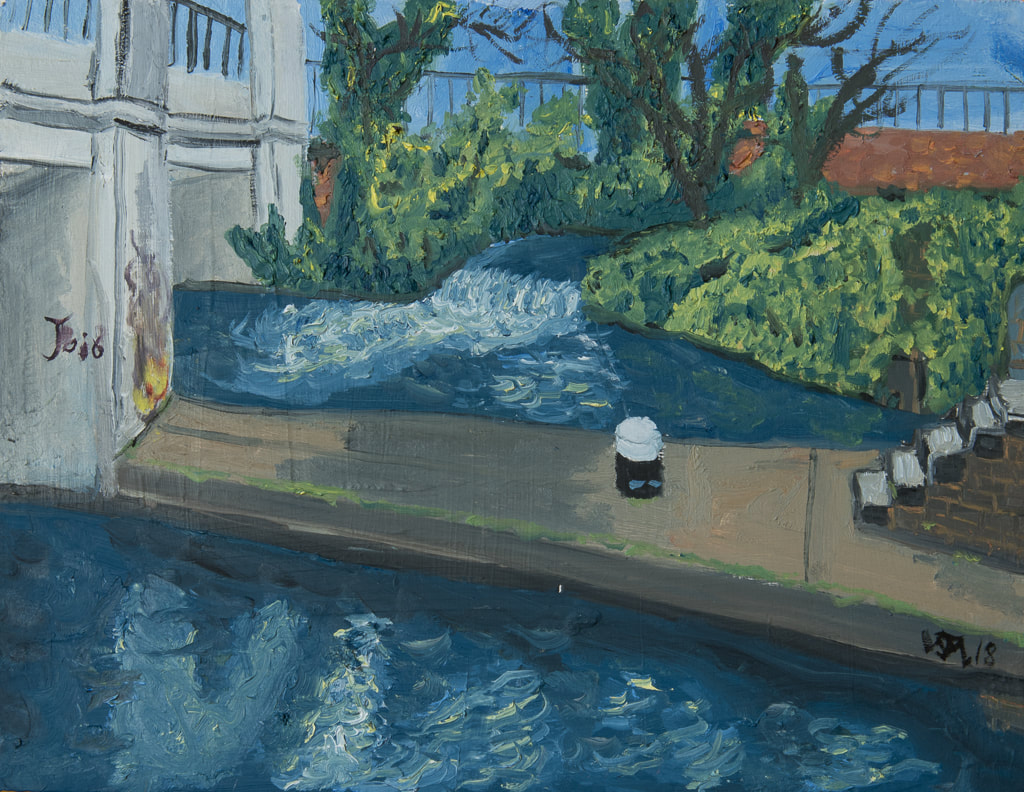
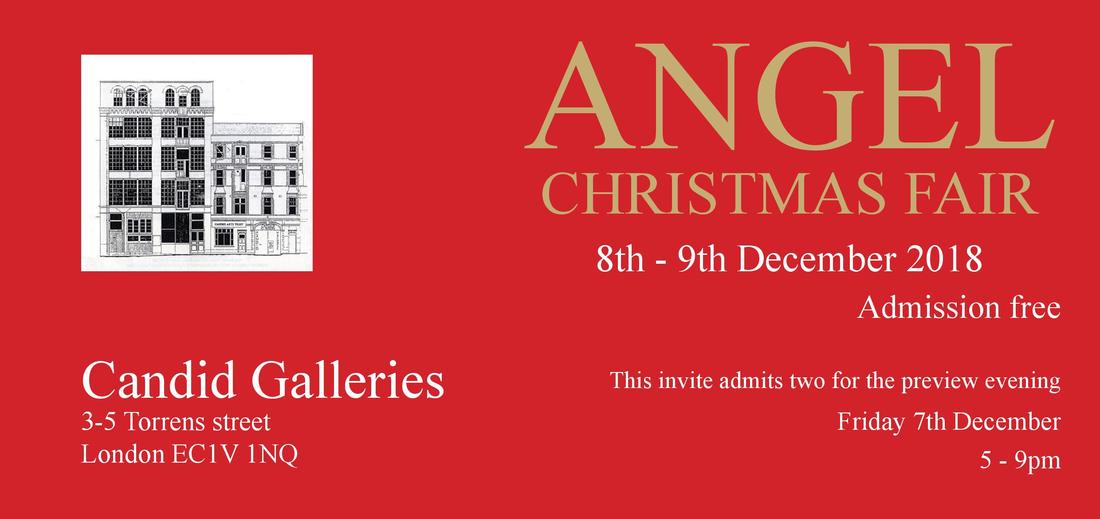

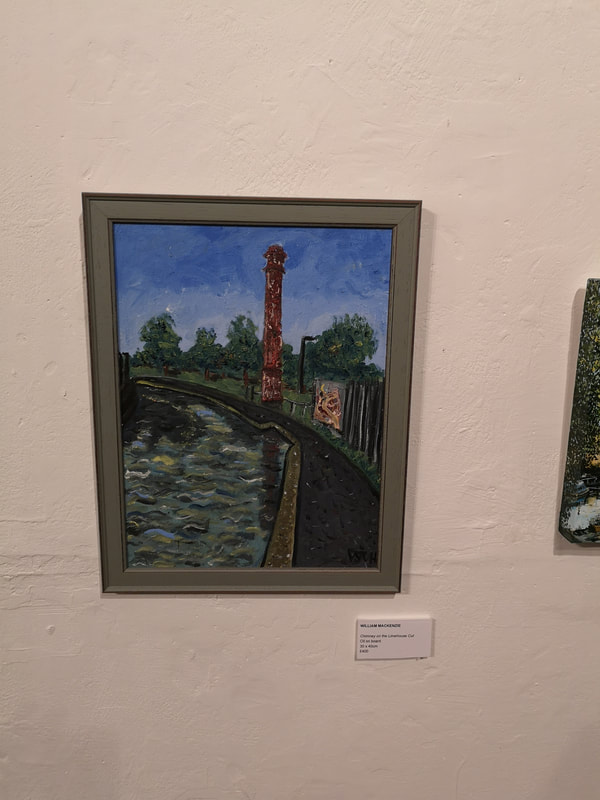




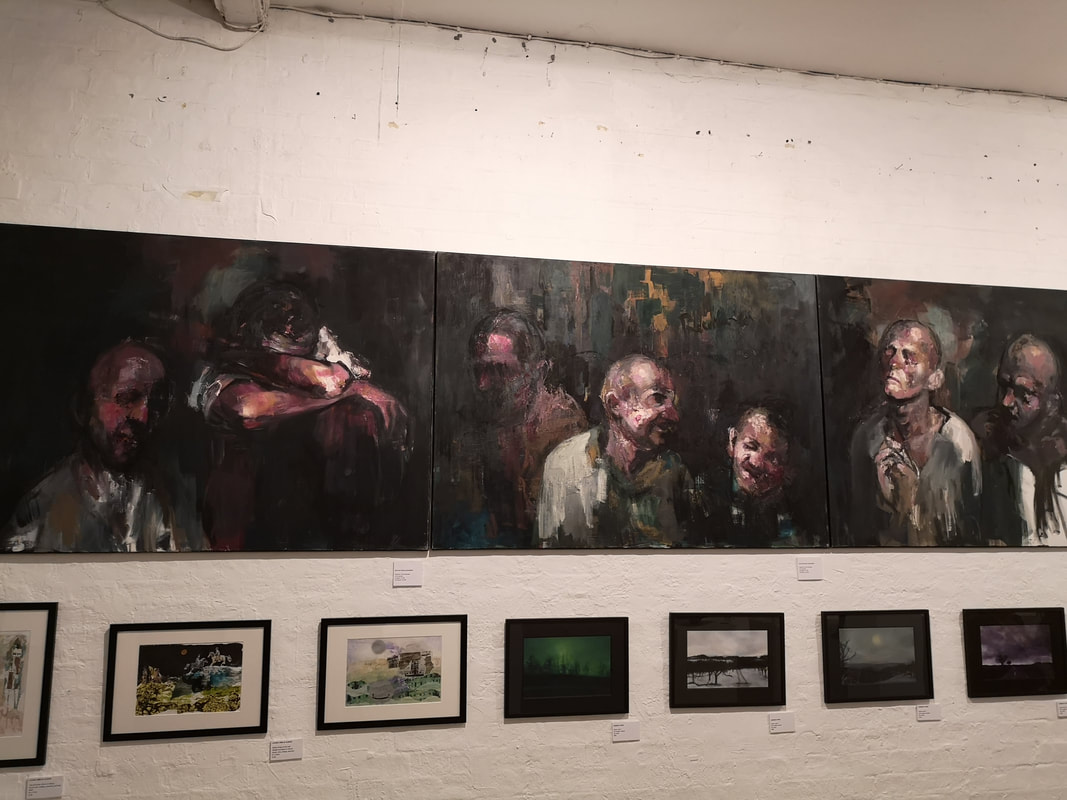



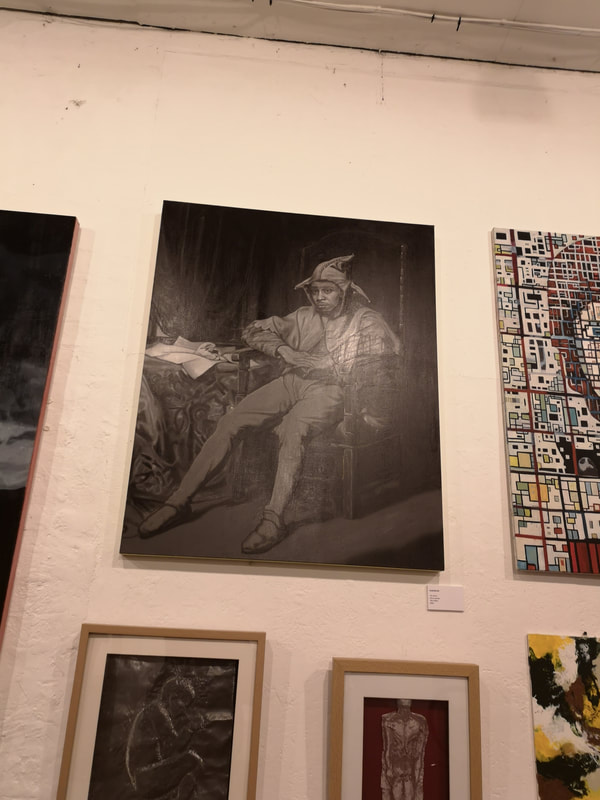

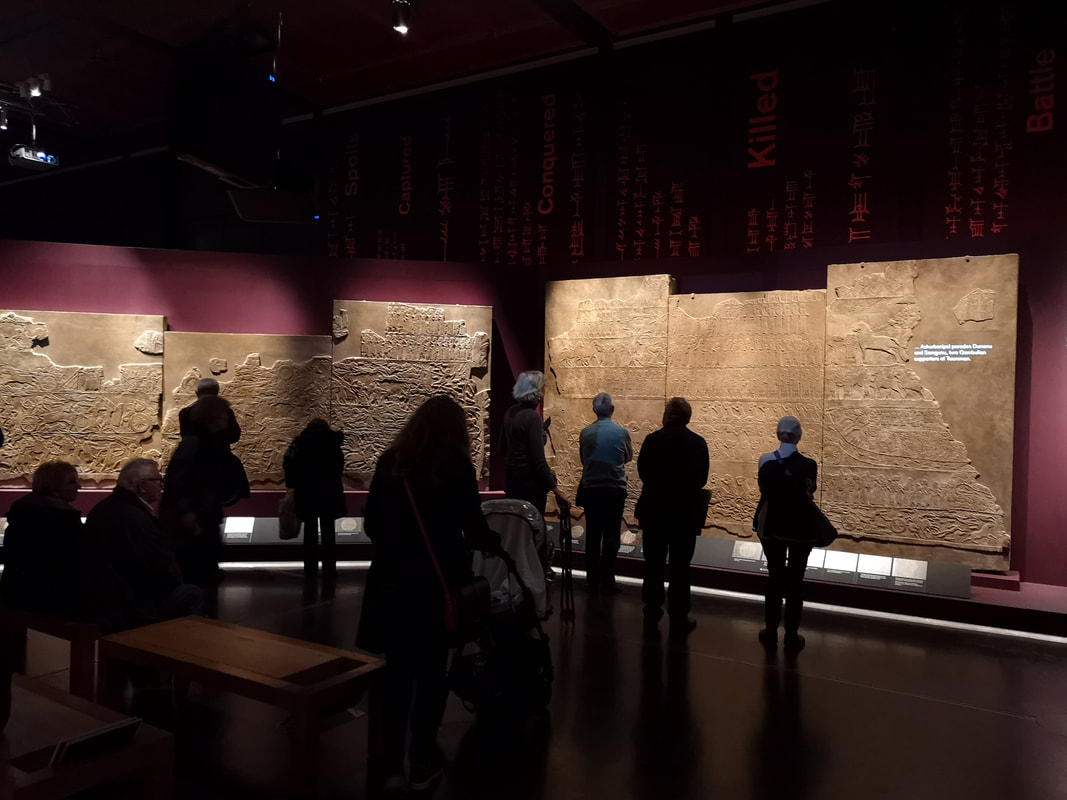
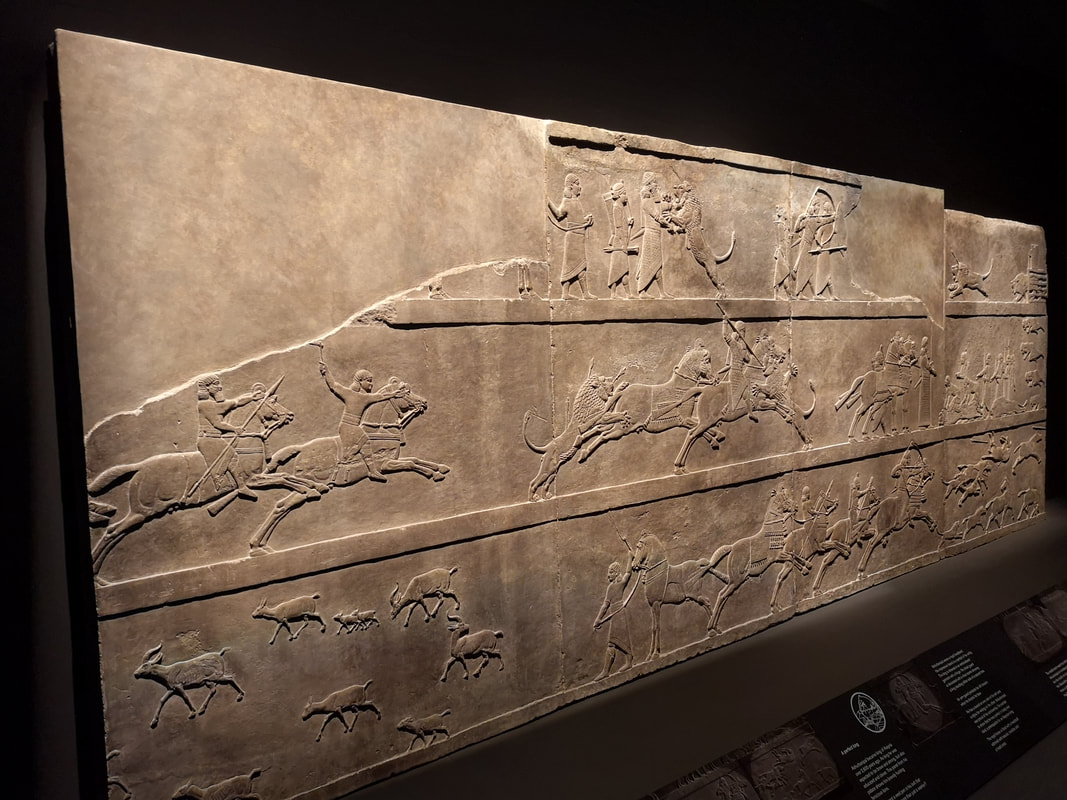


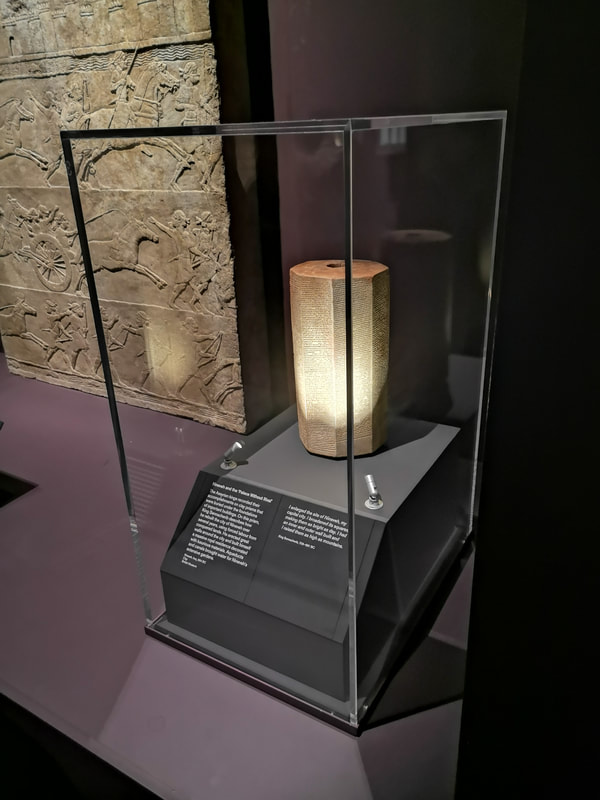
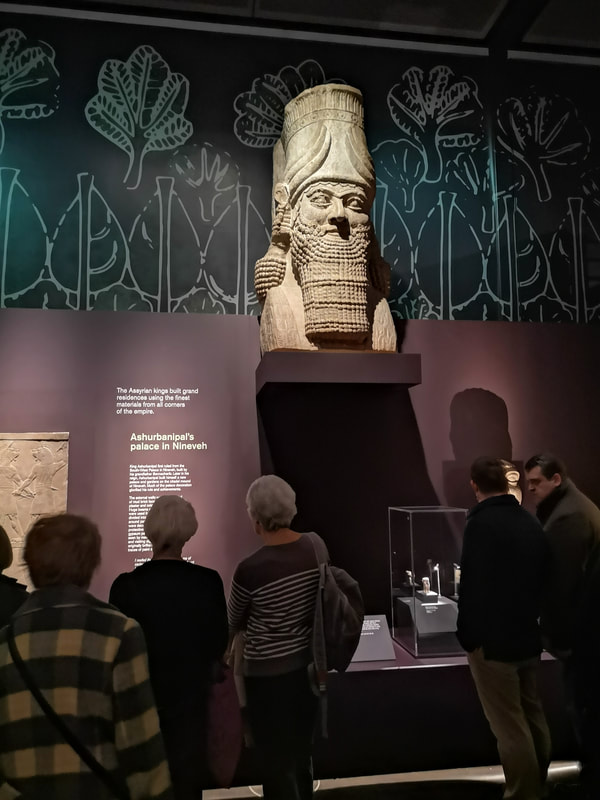


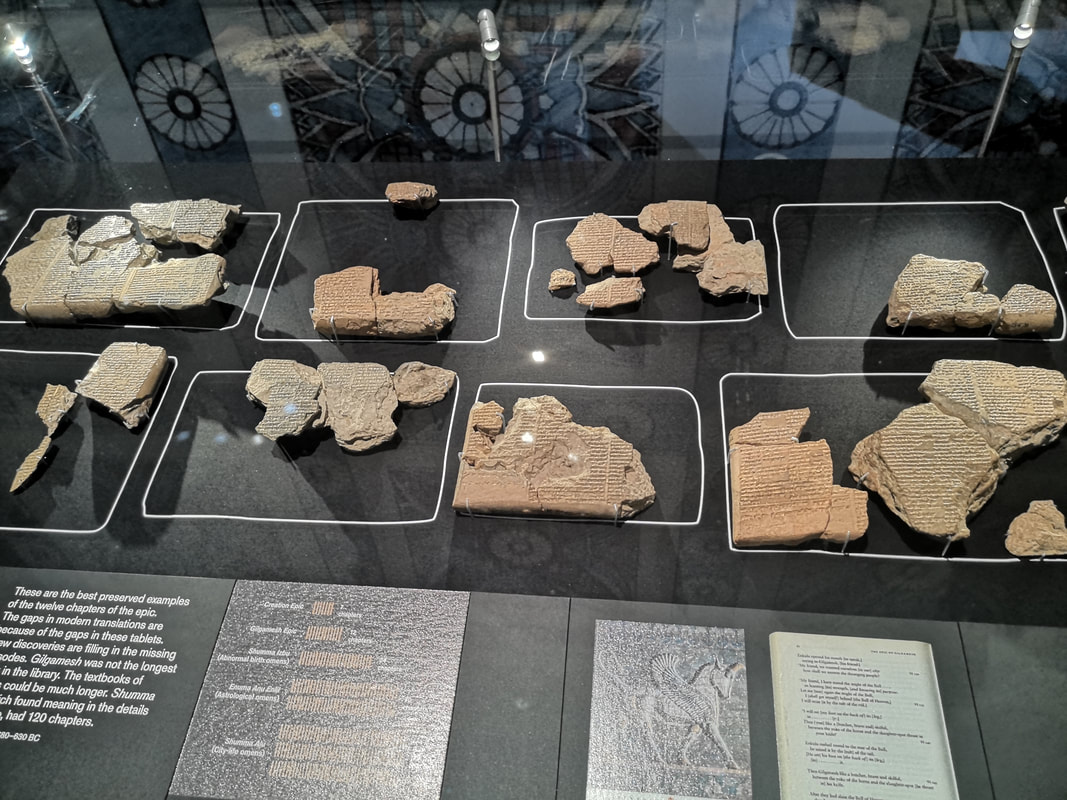

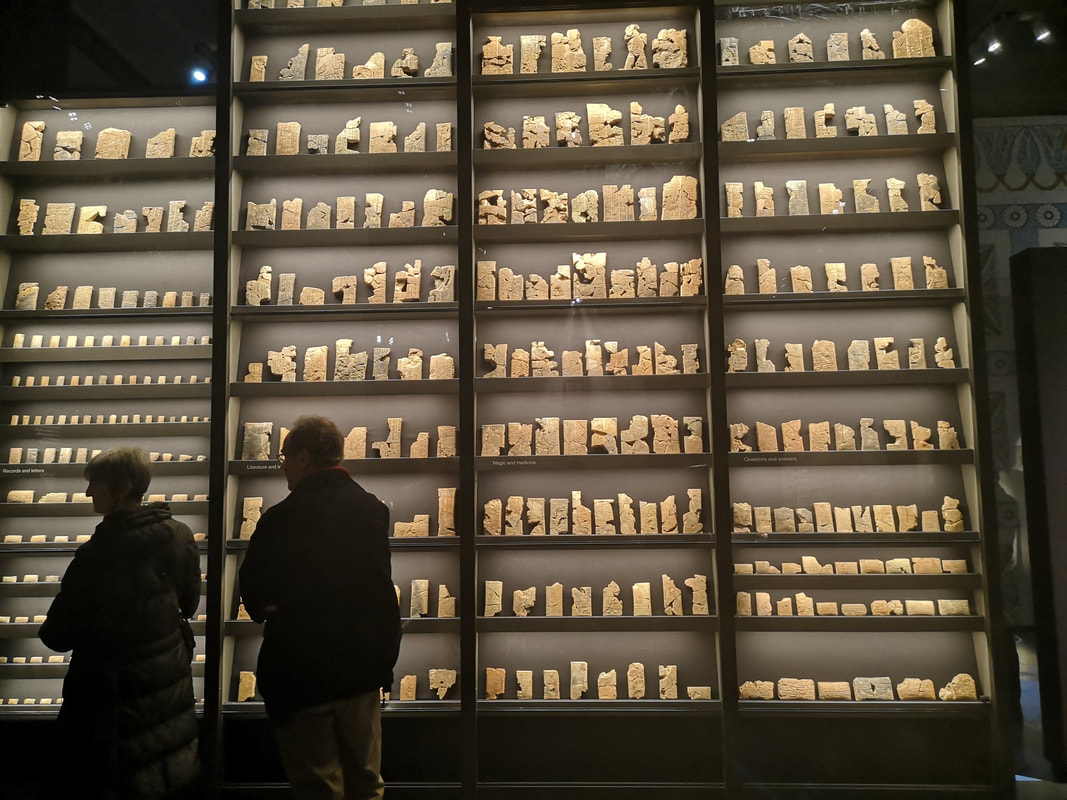
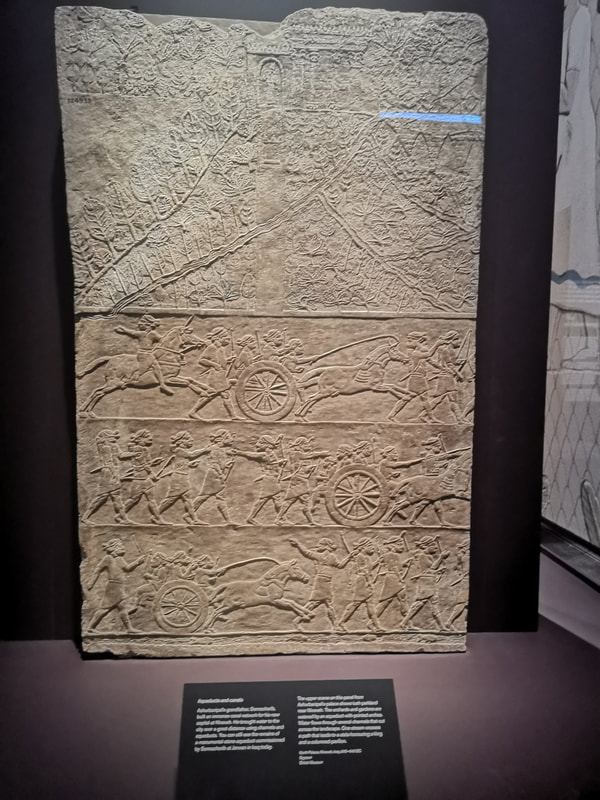
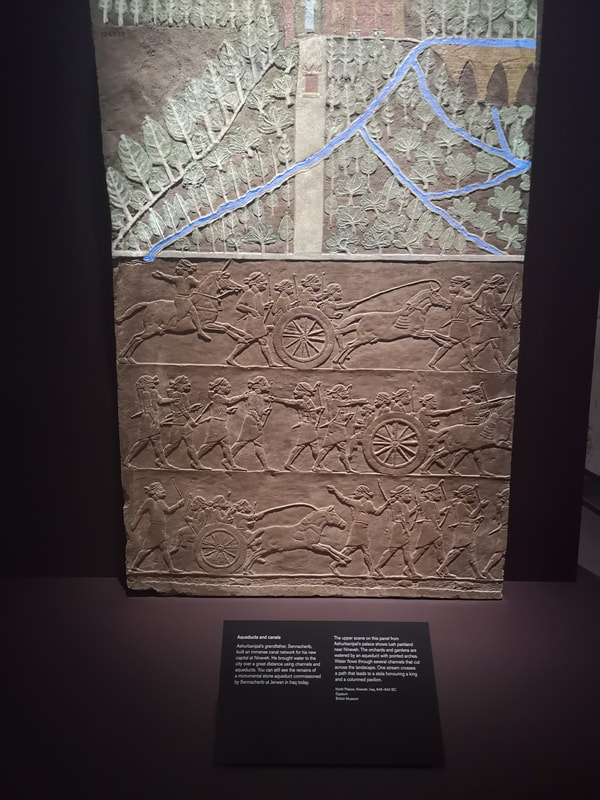
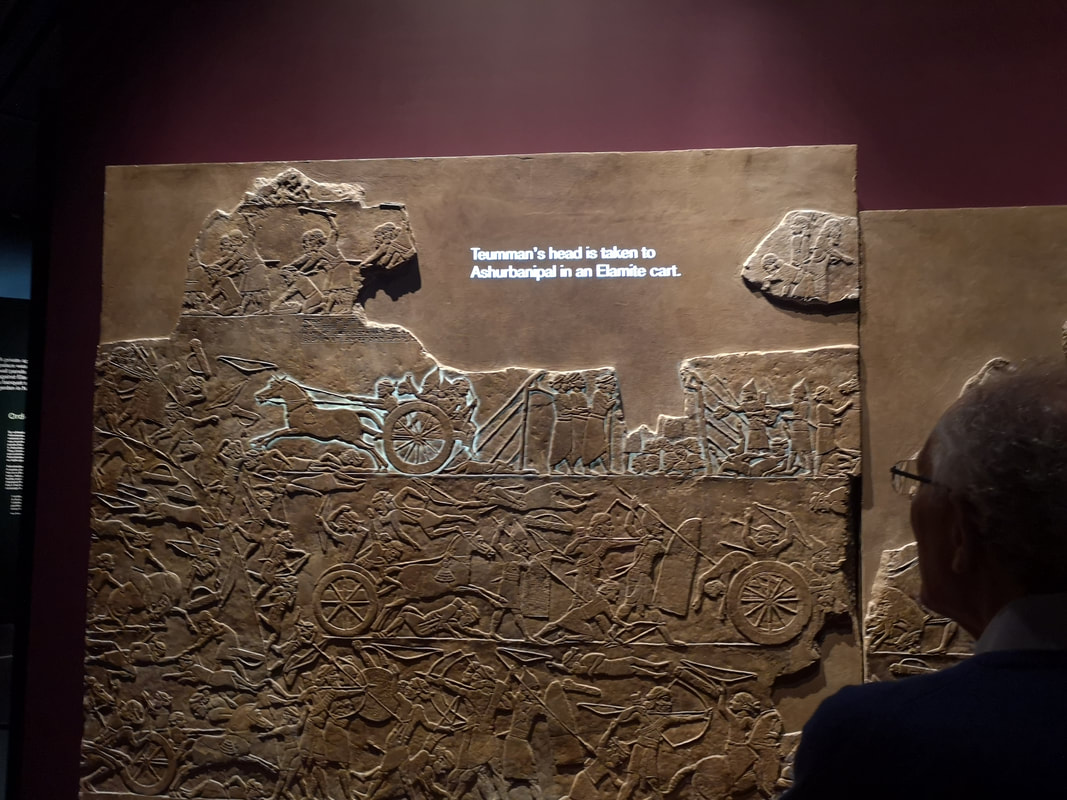
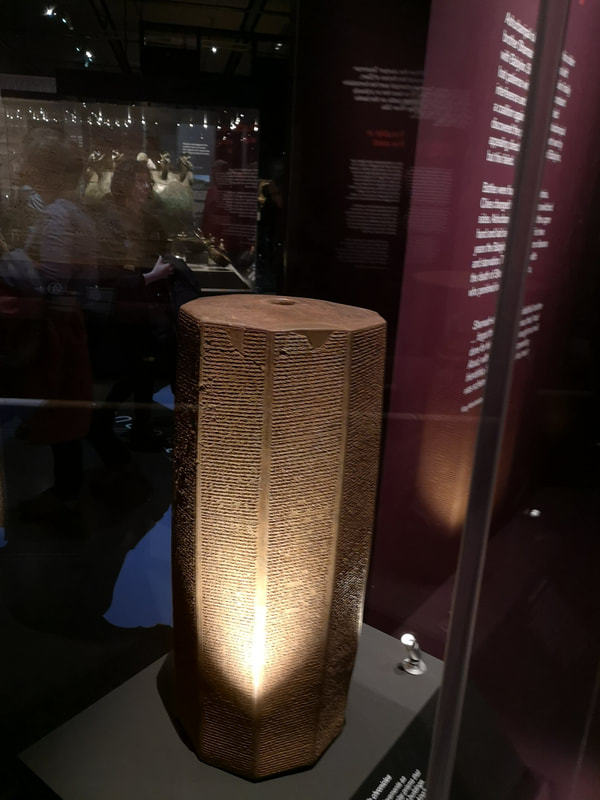
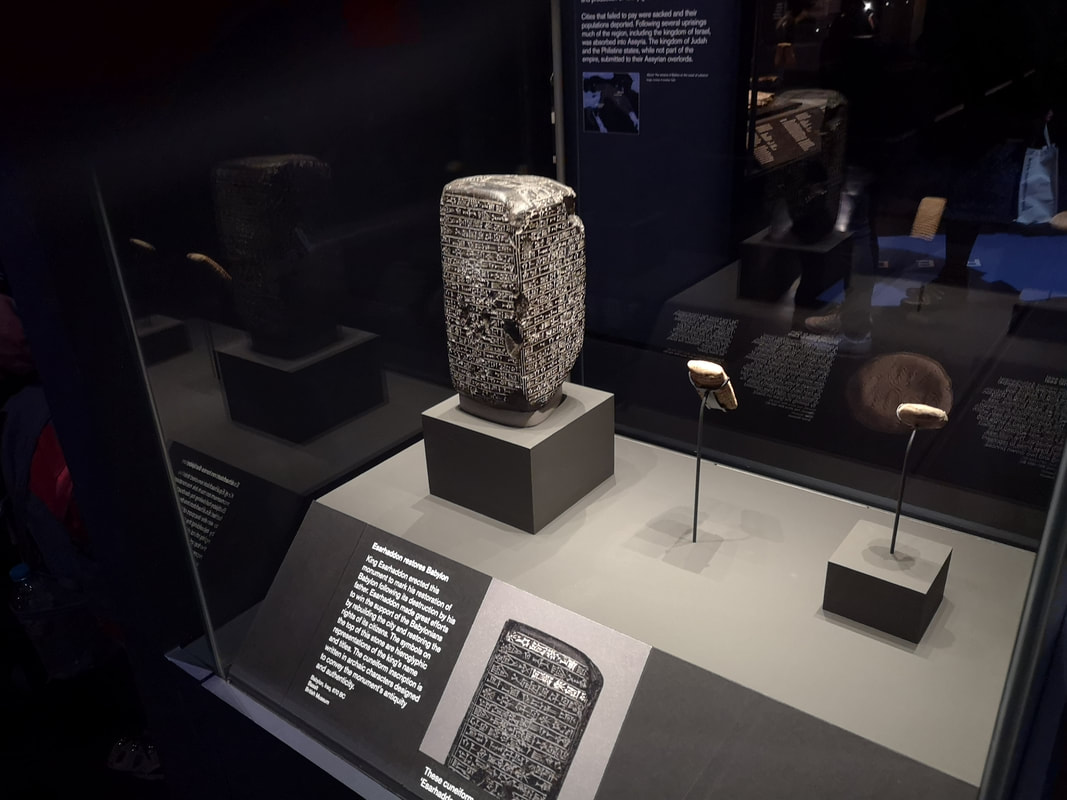

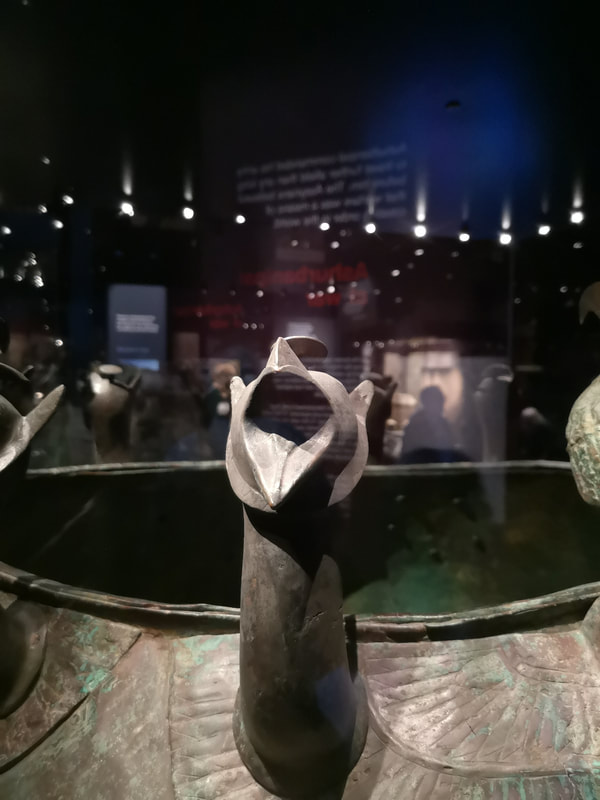
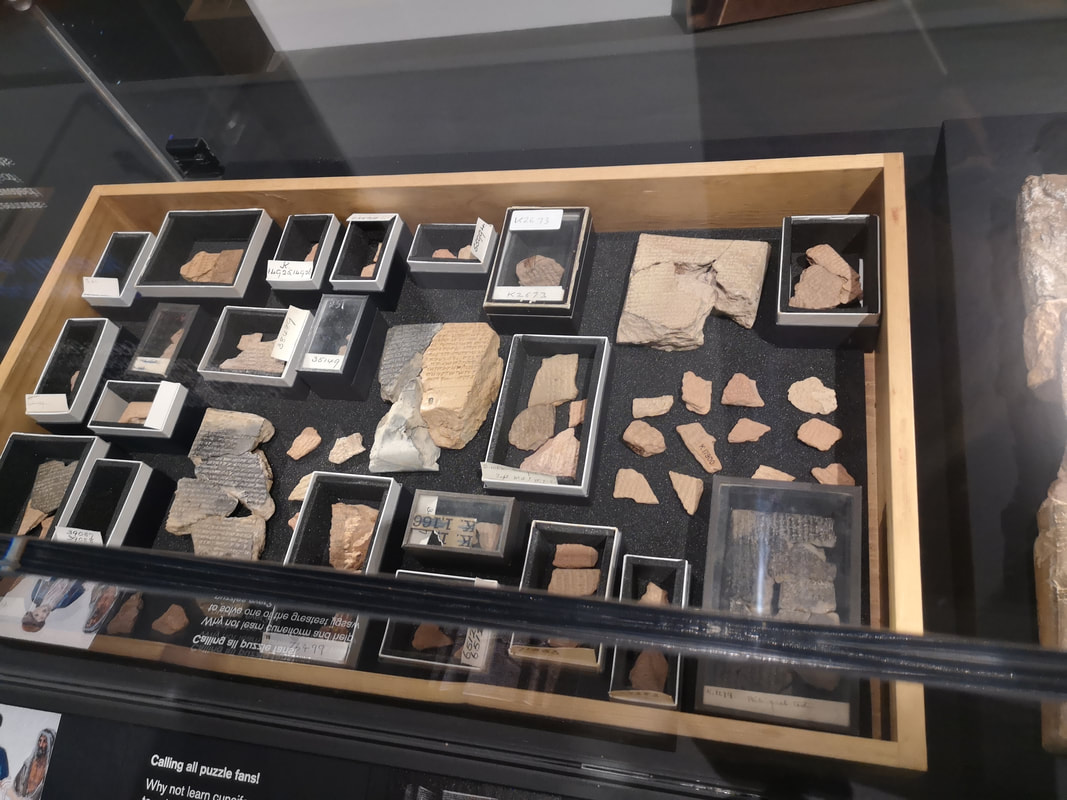
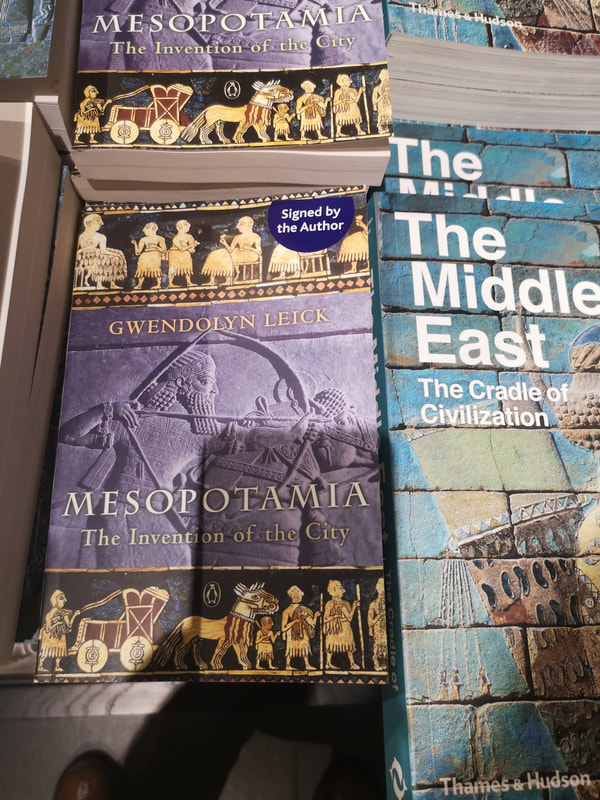
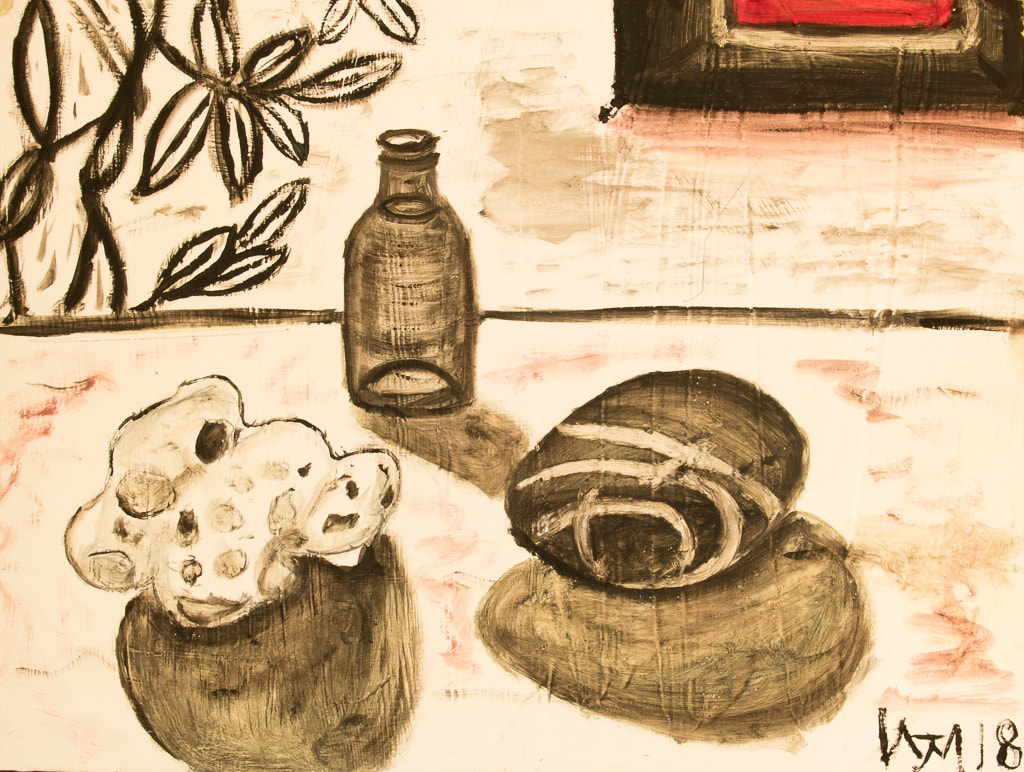

 RSS Feed
RSS Feed